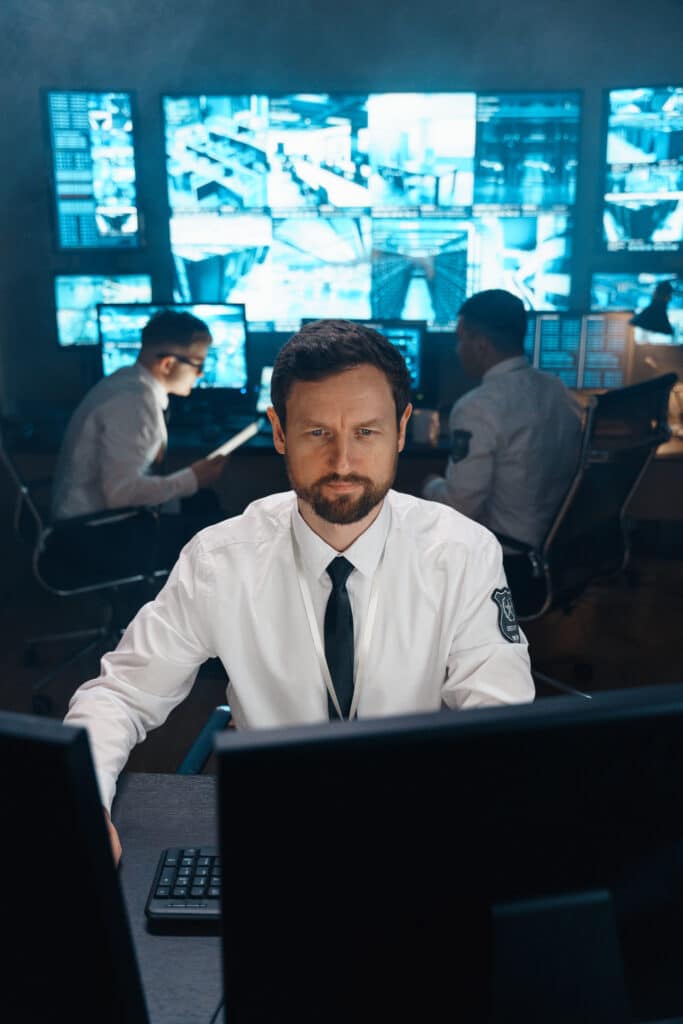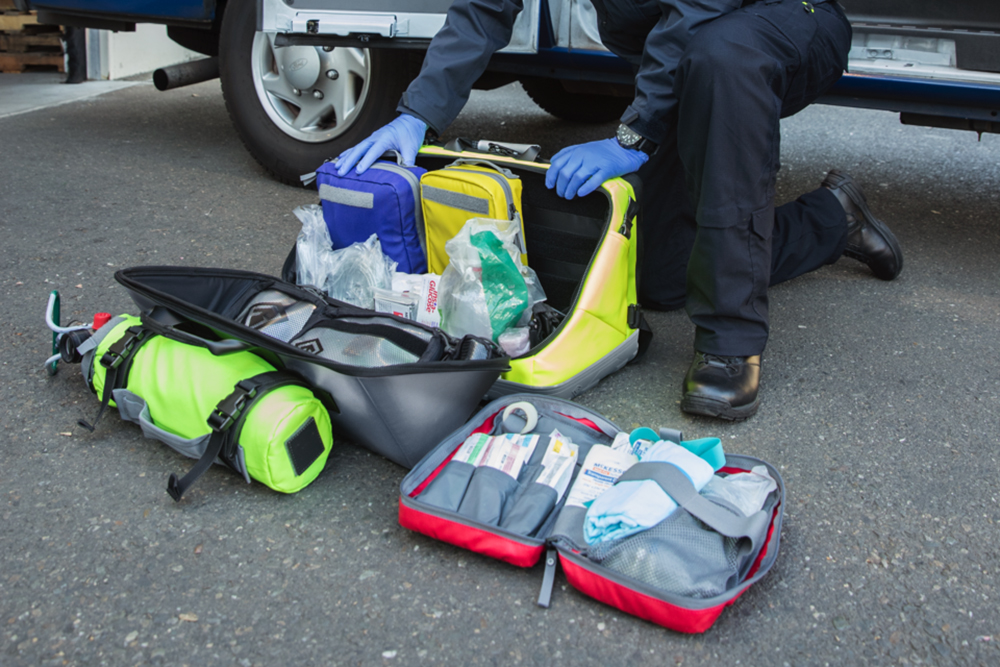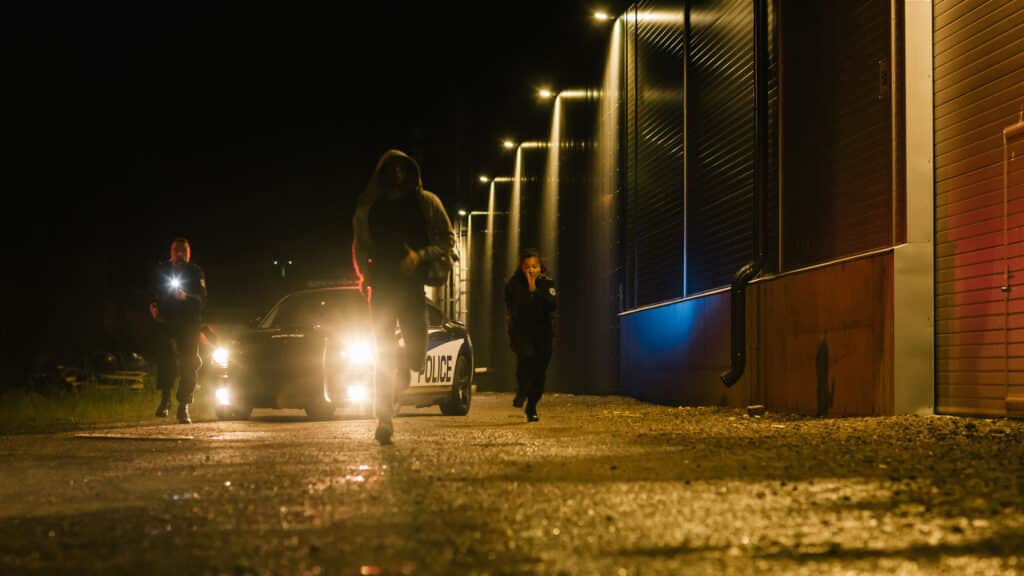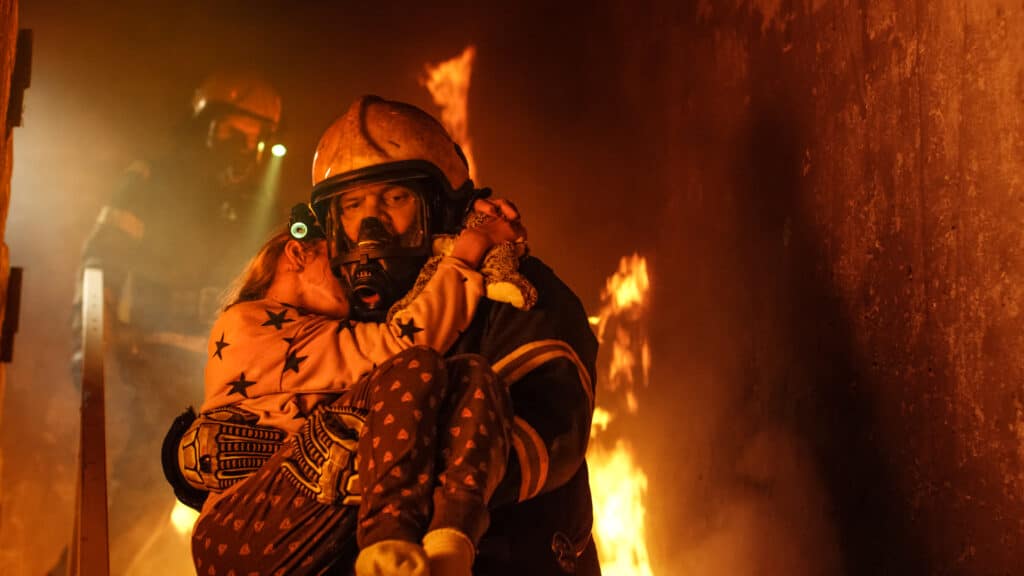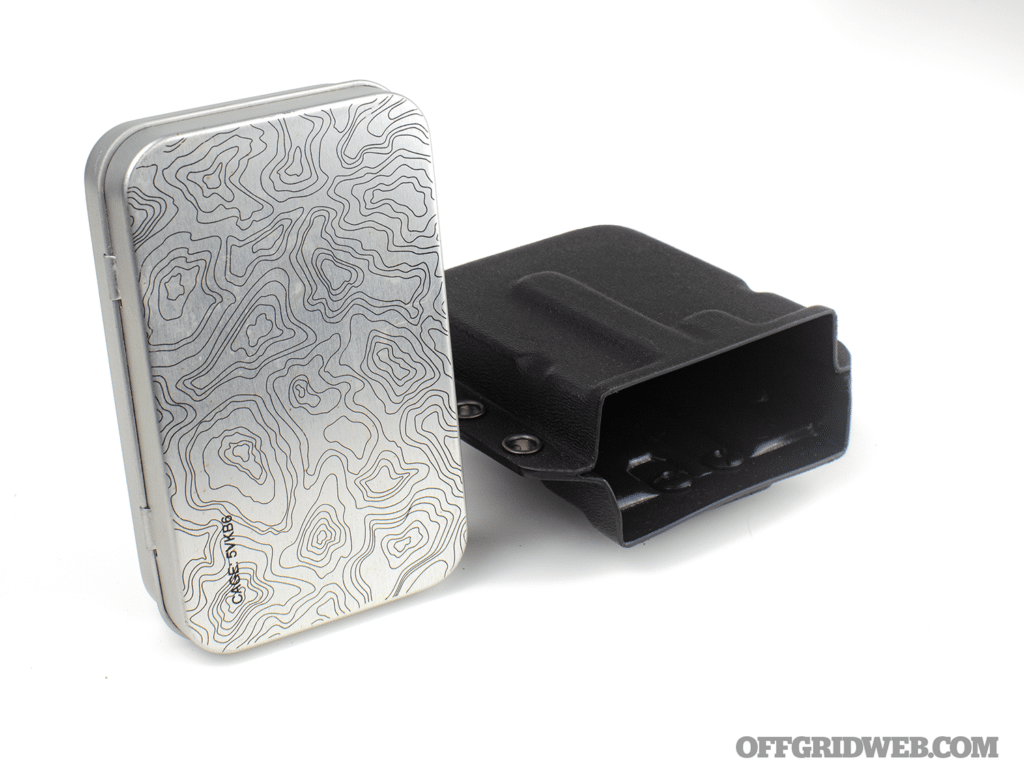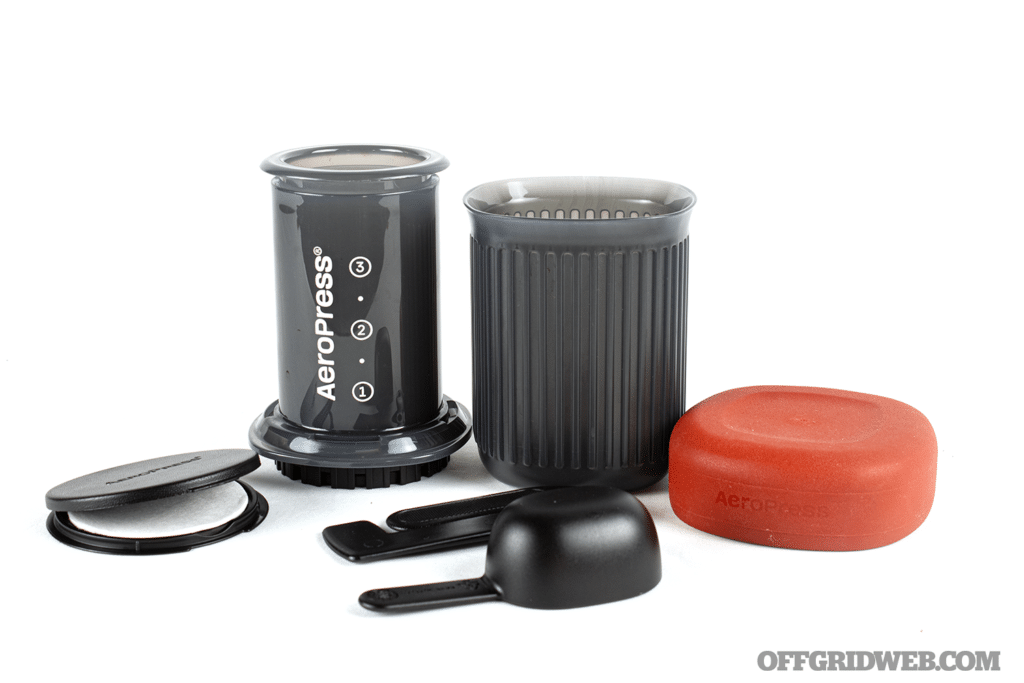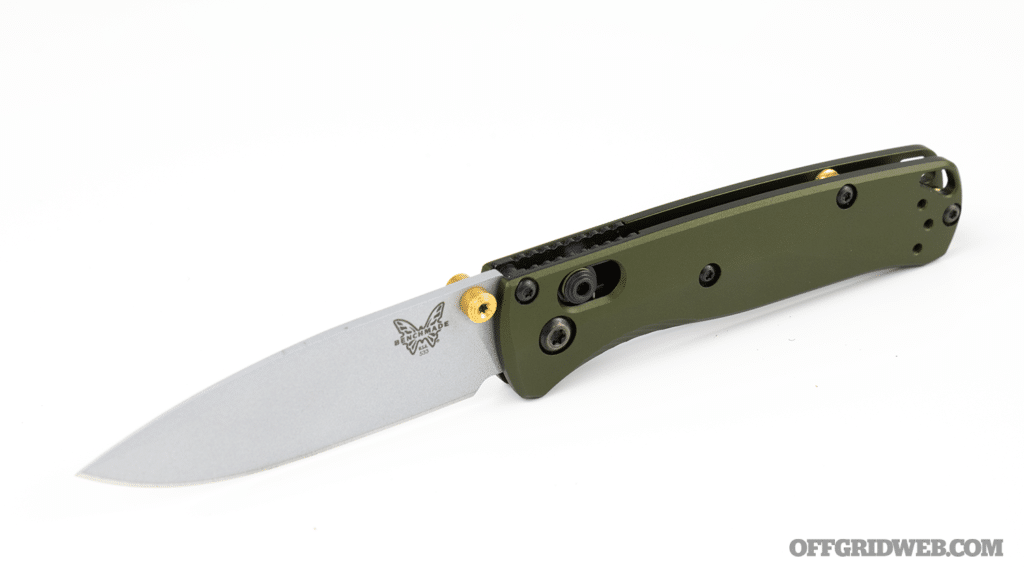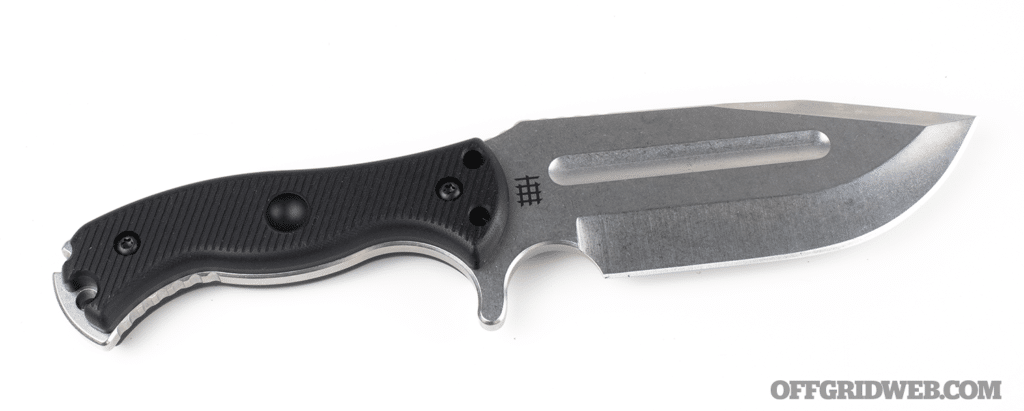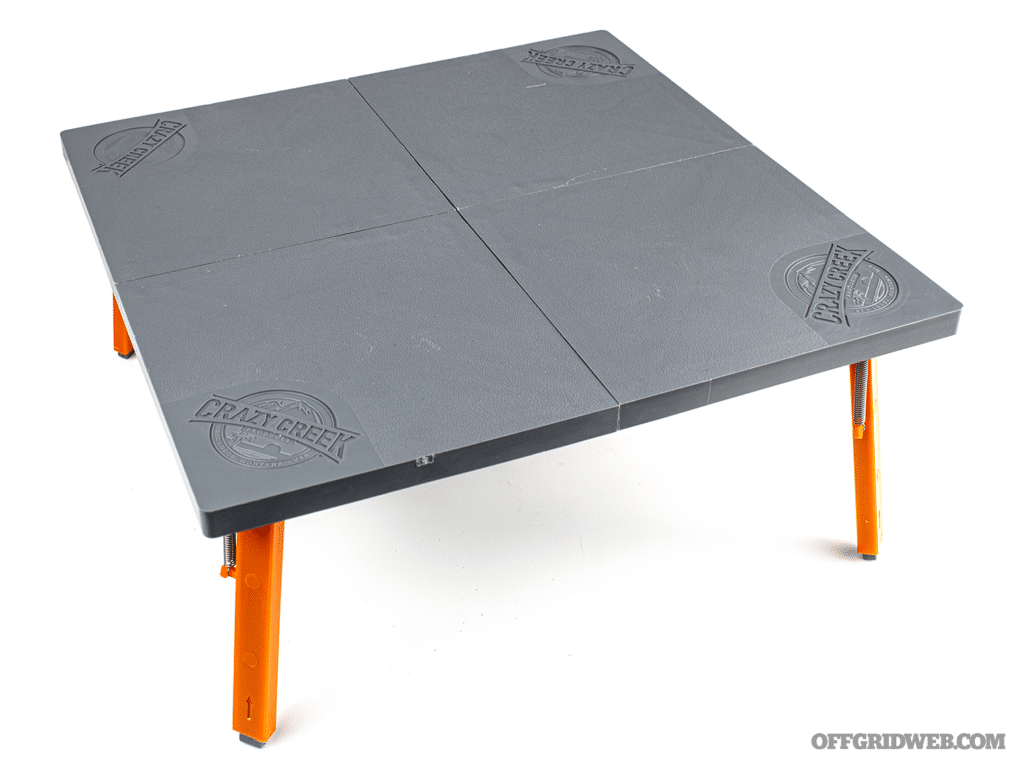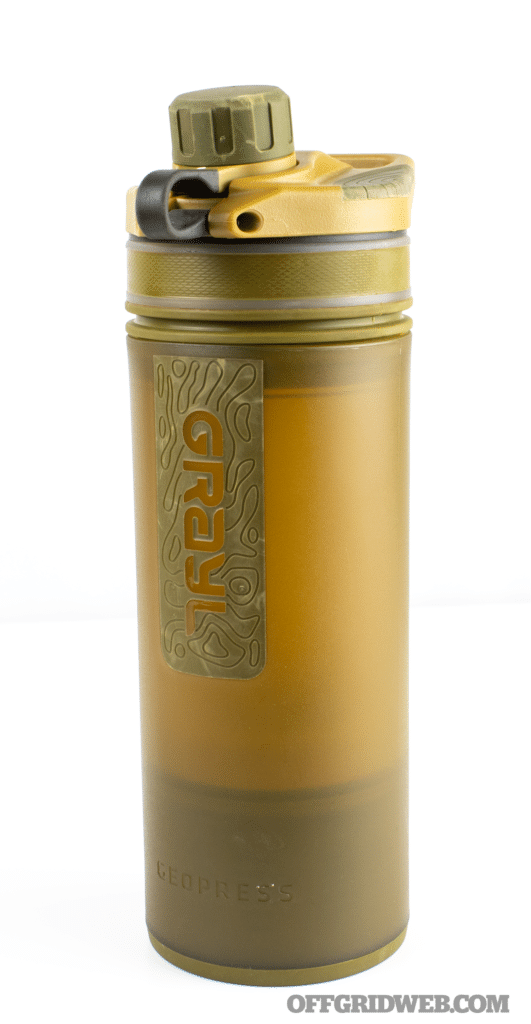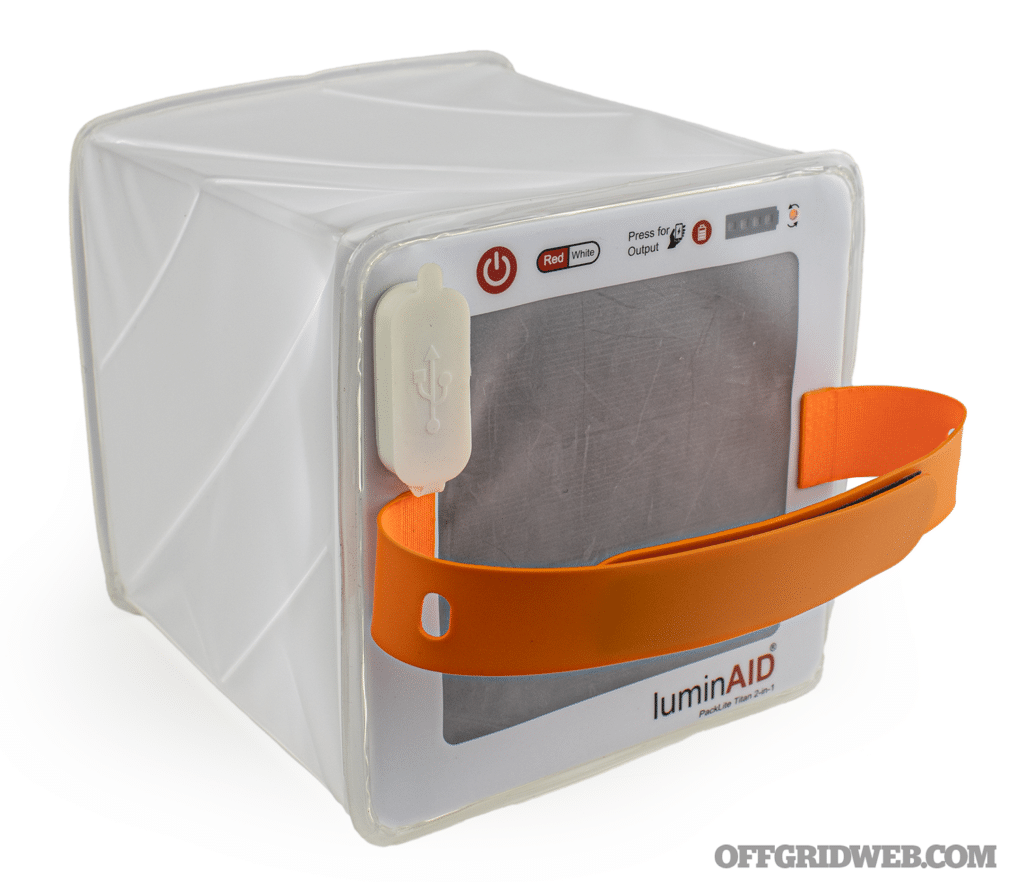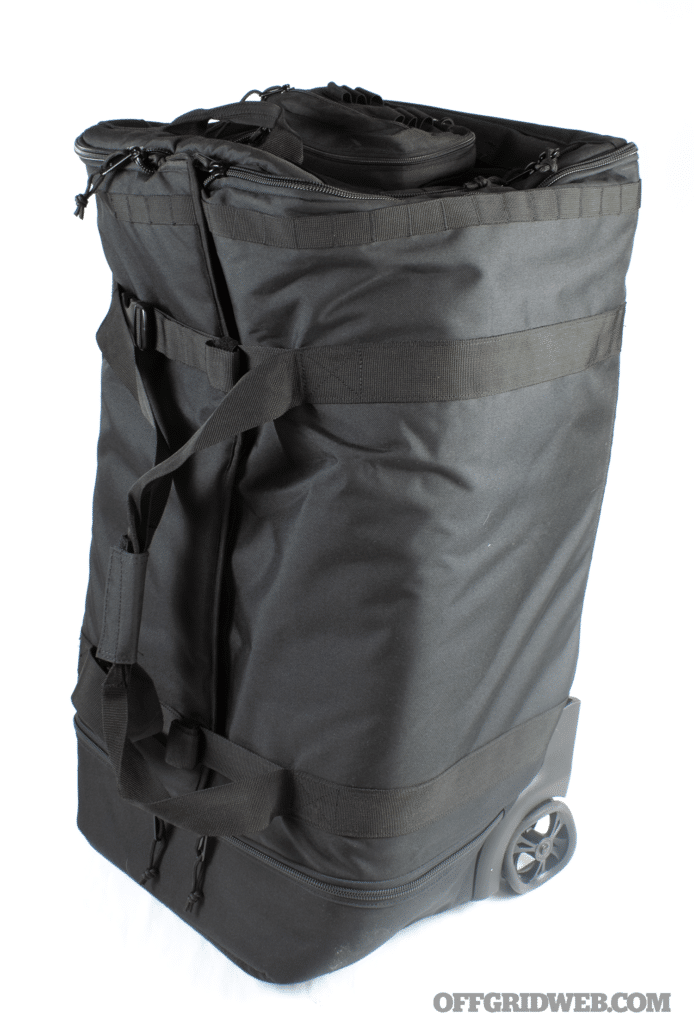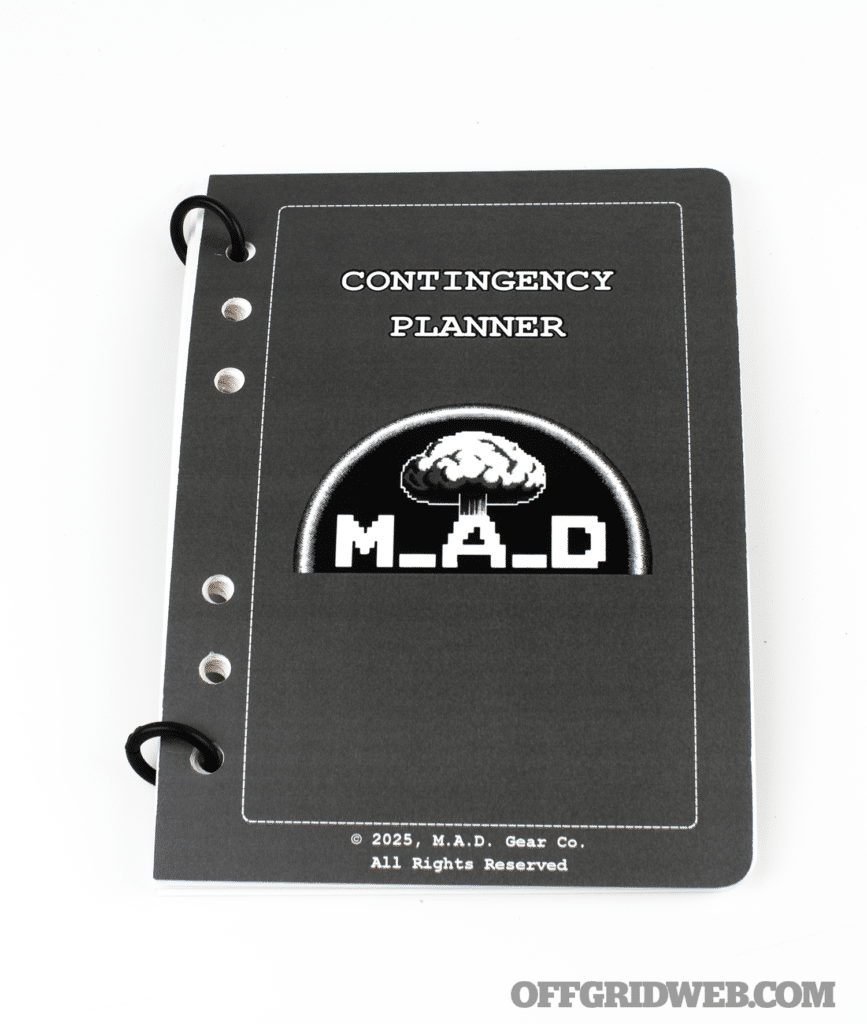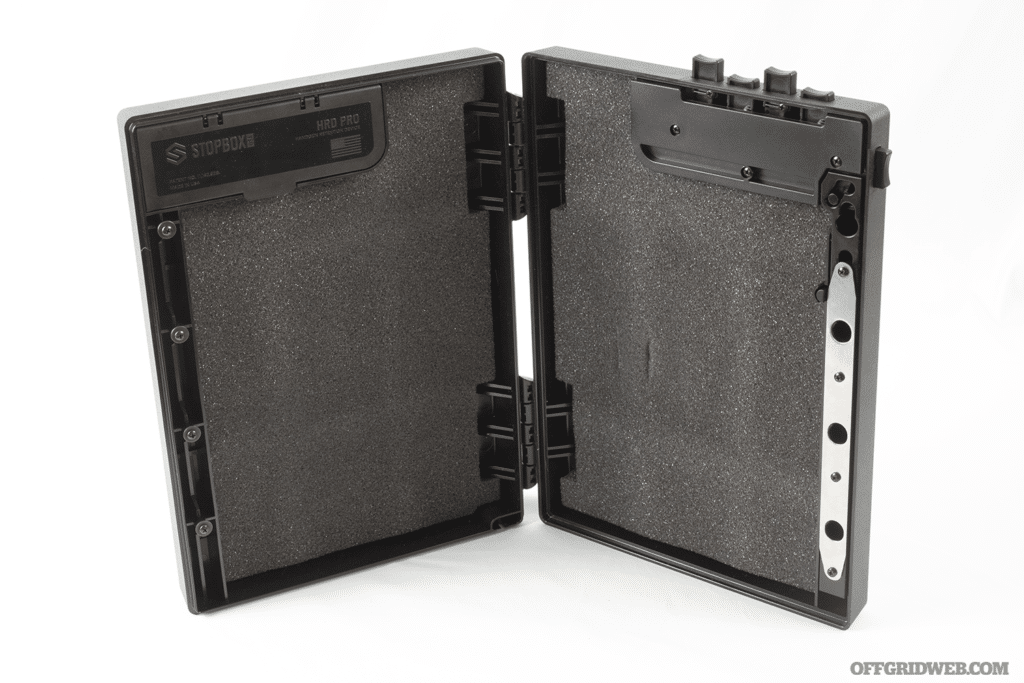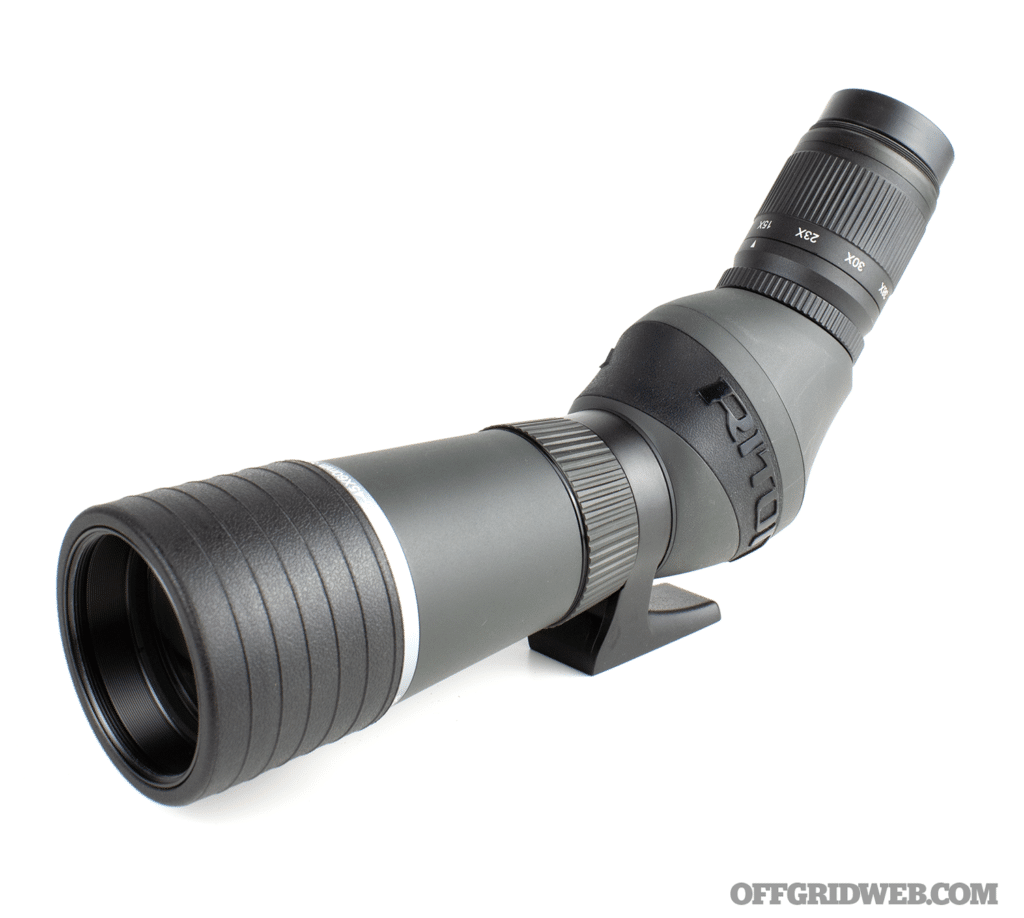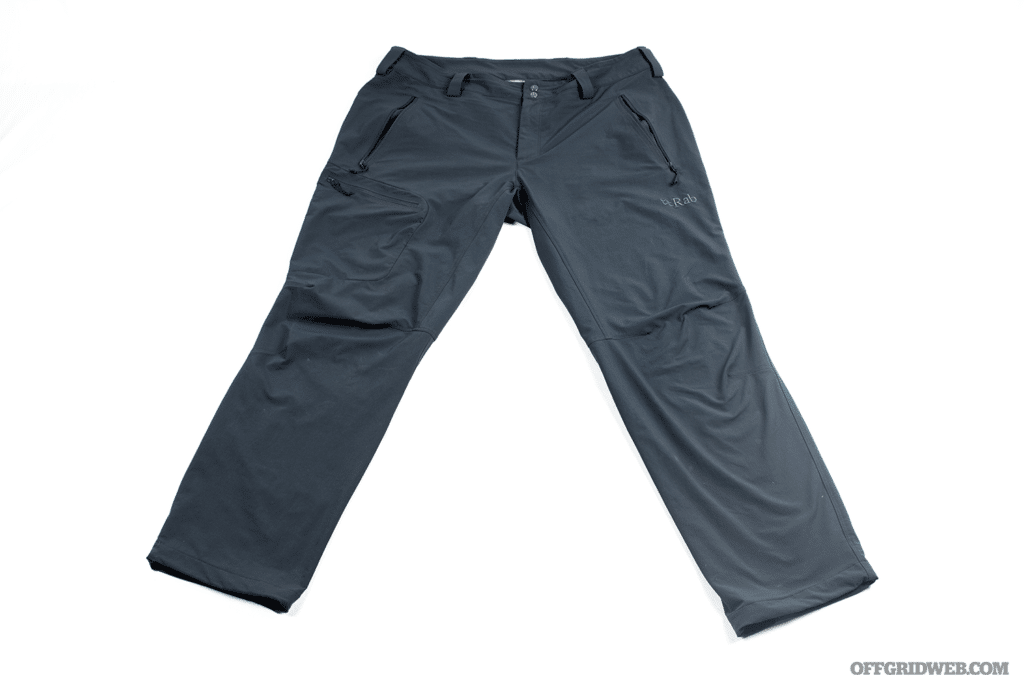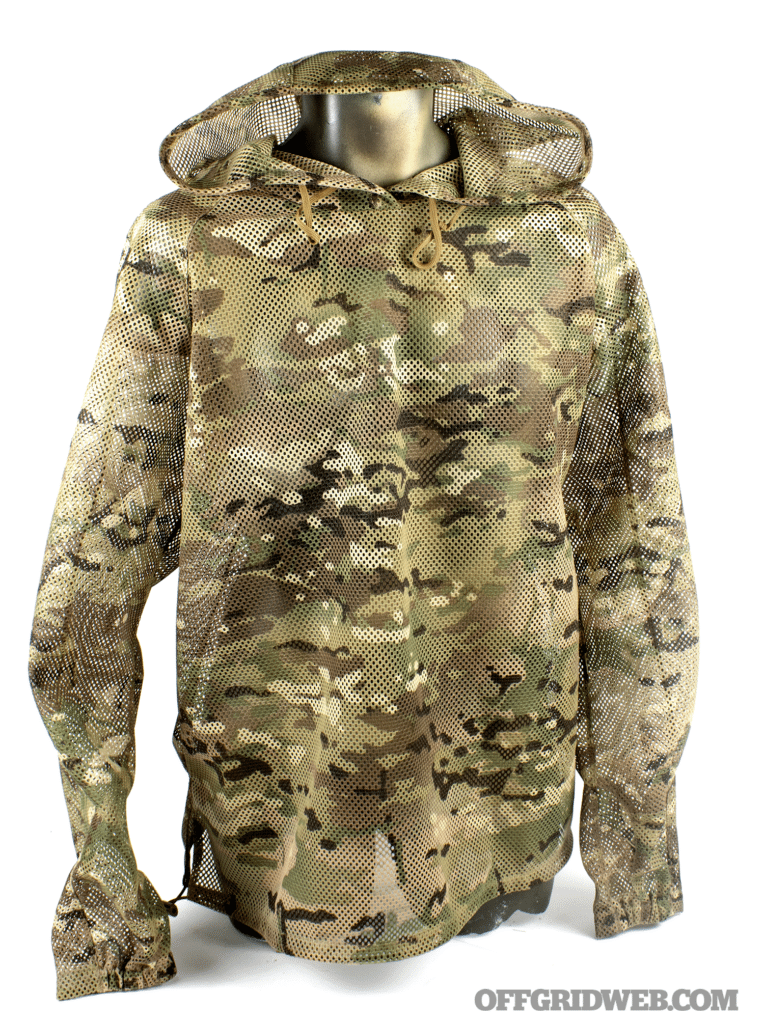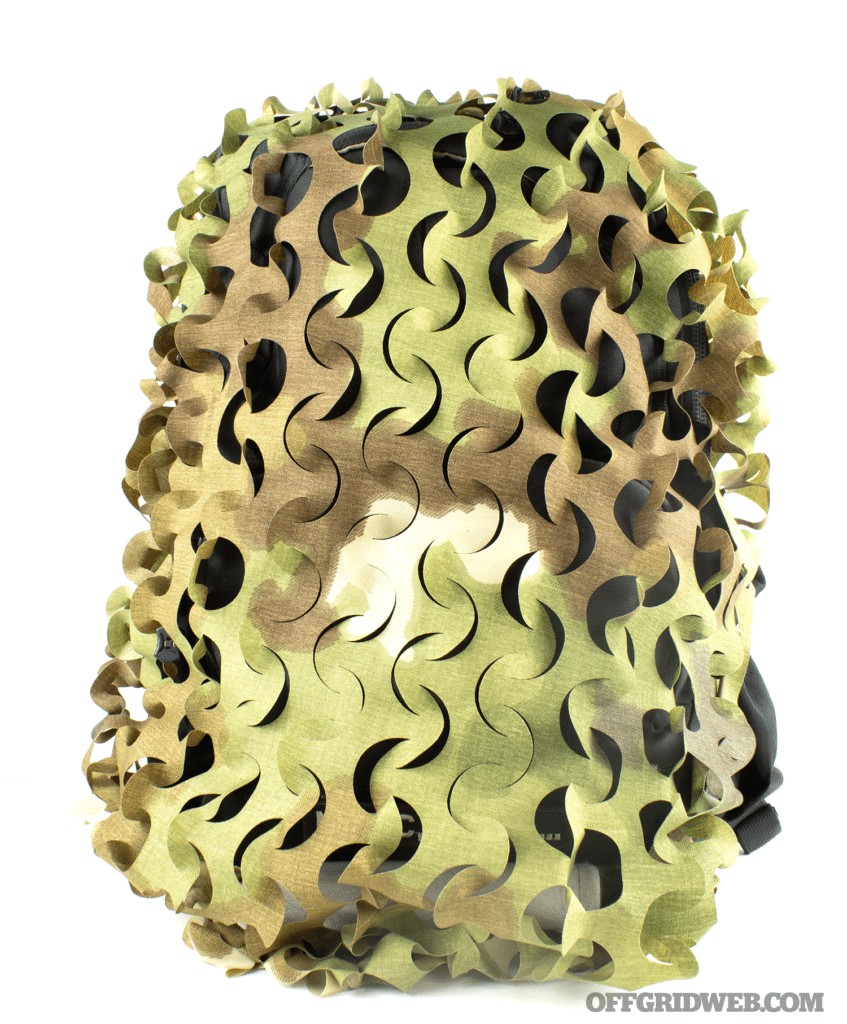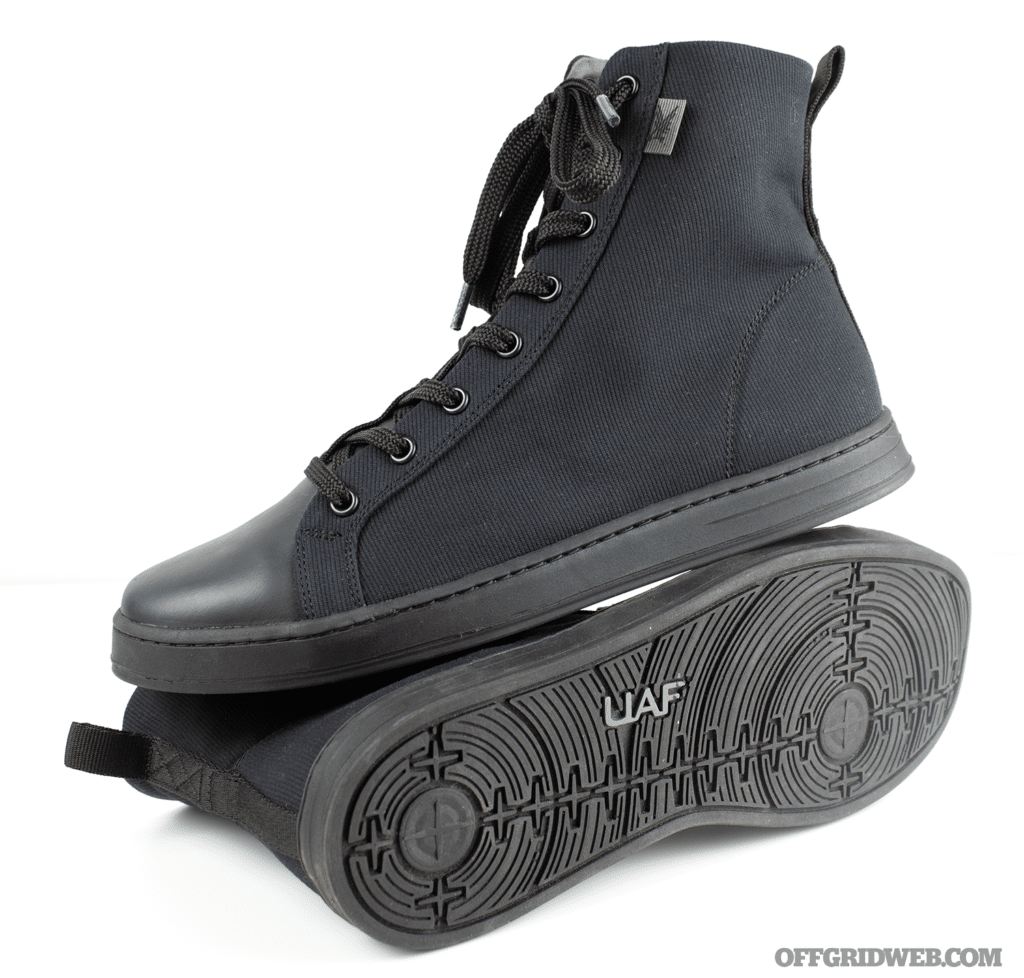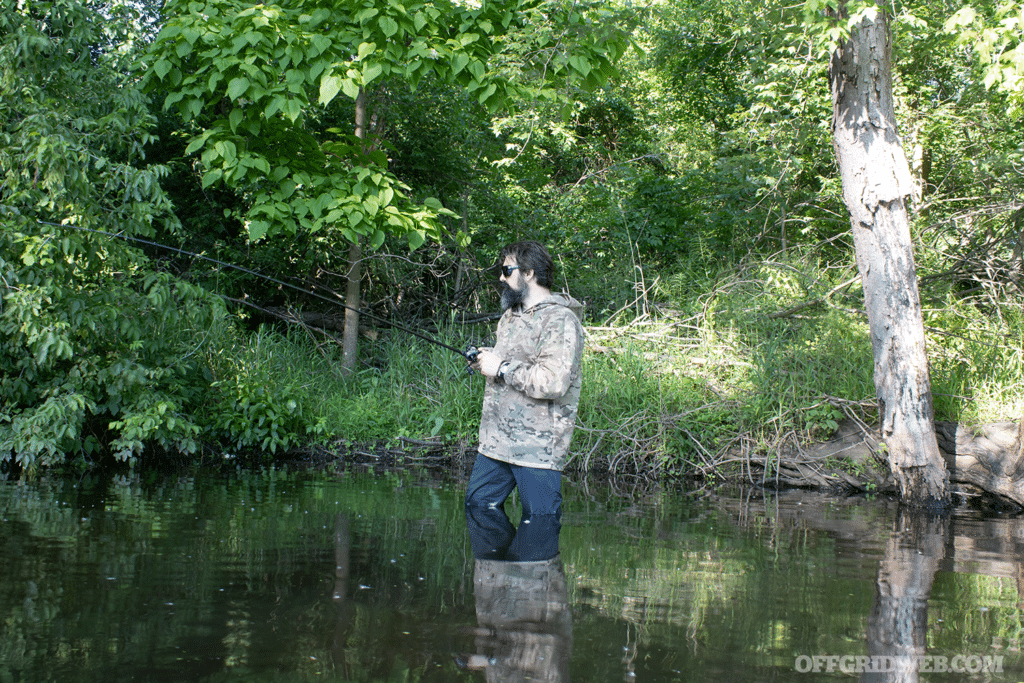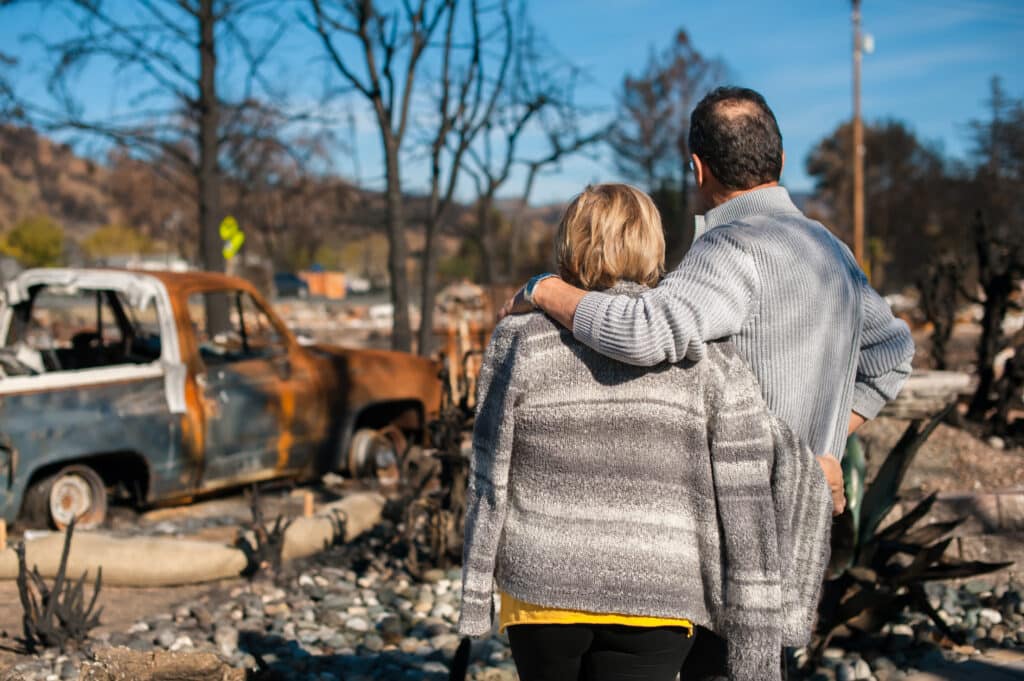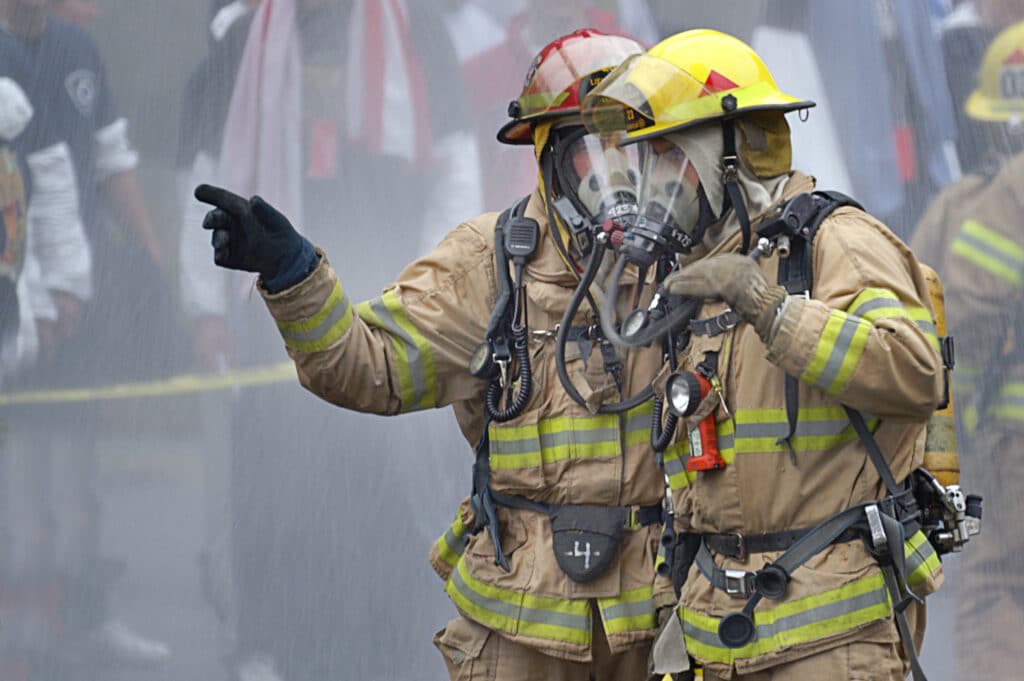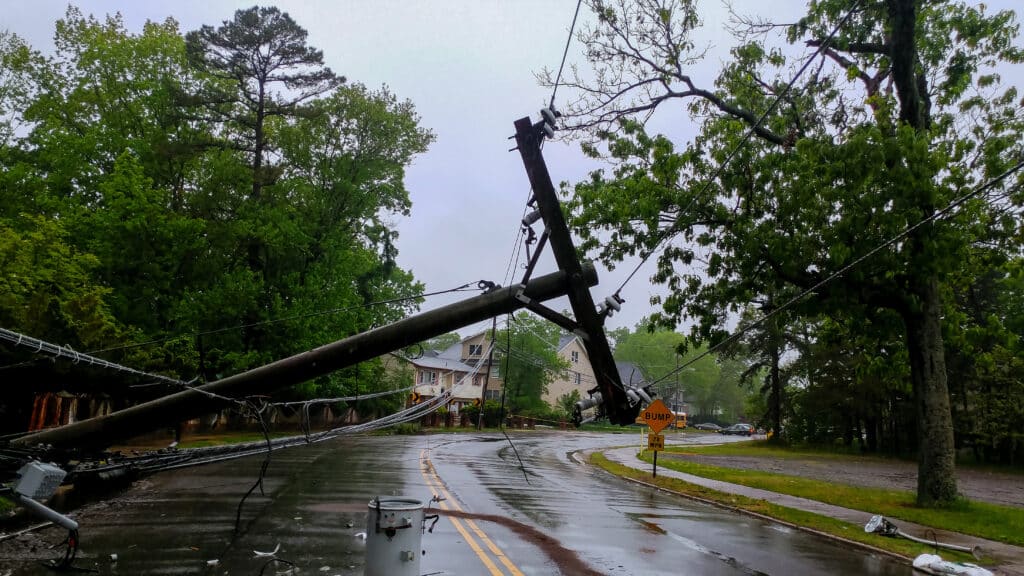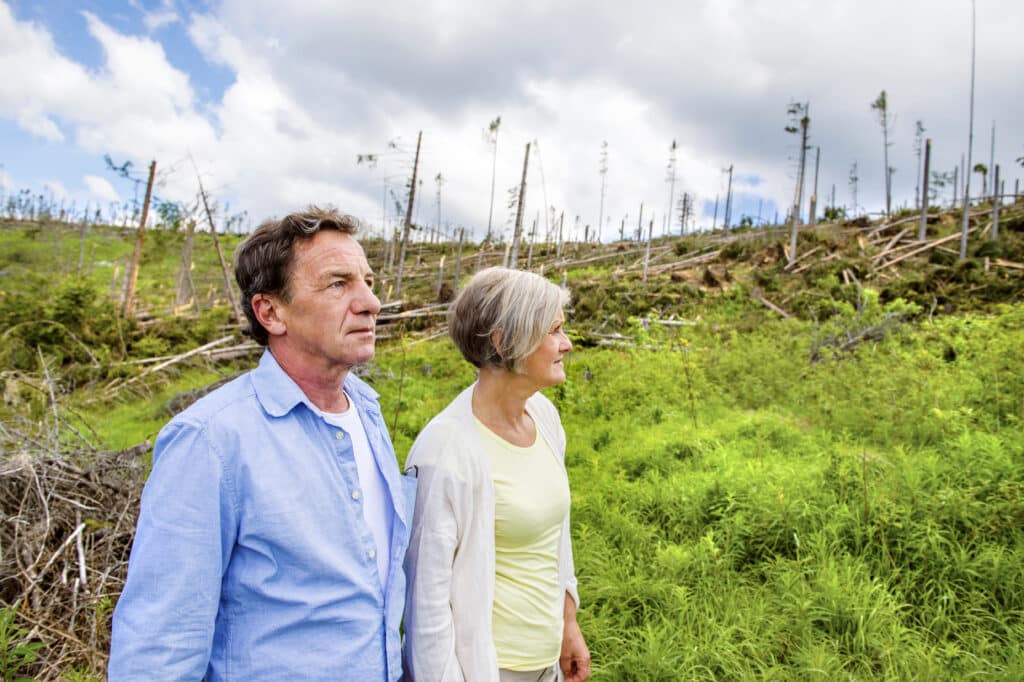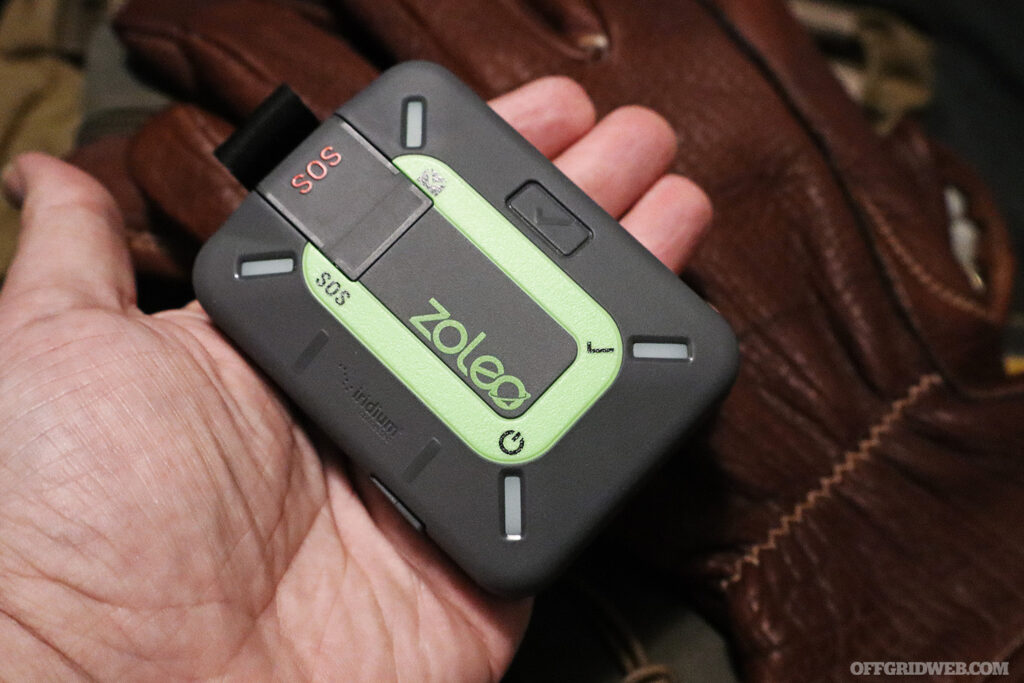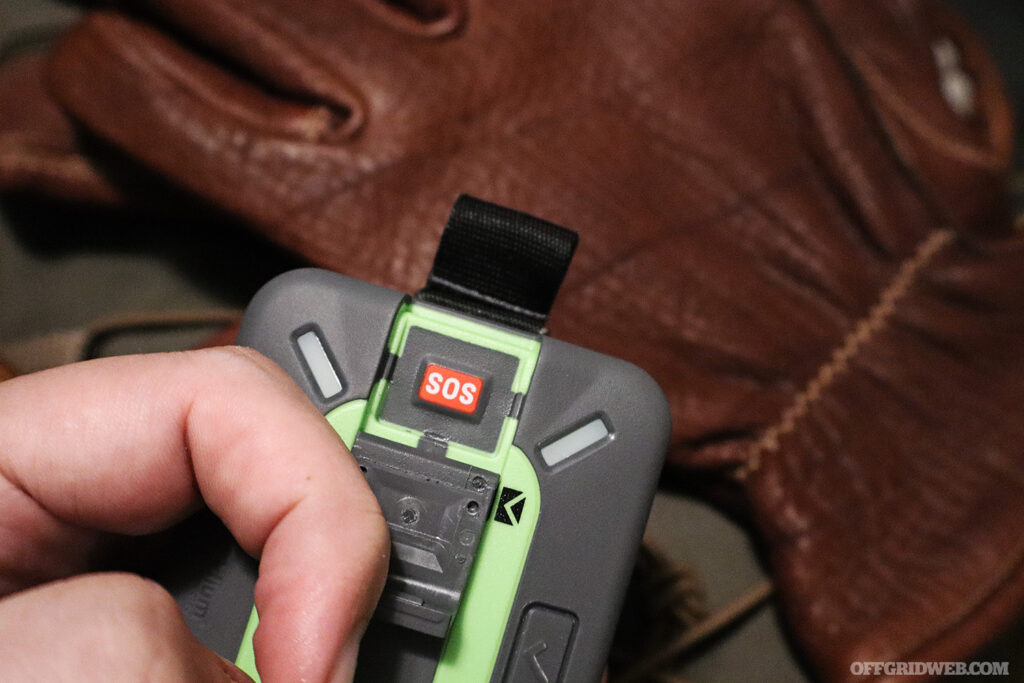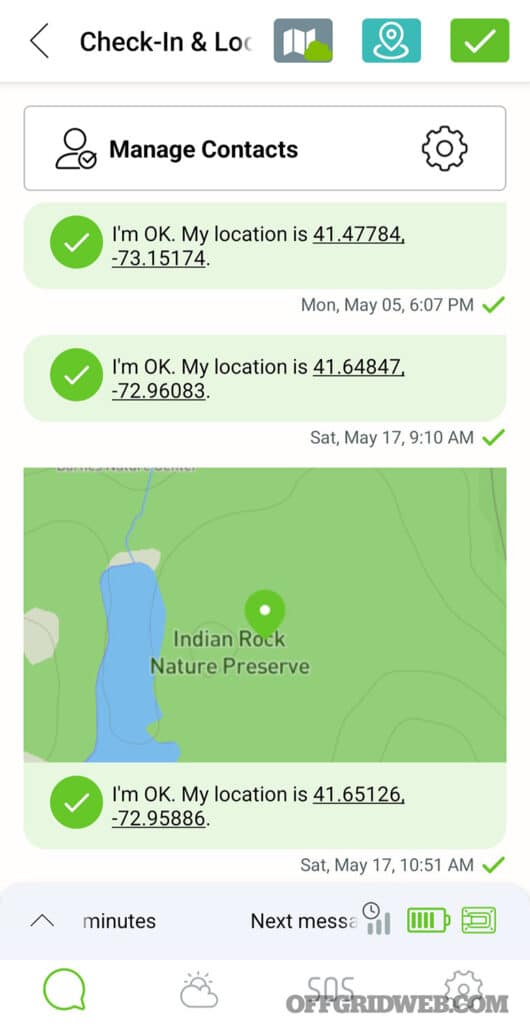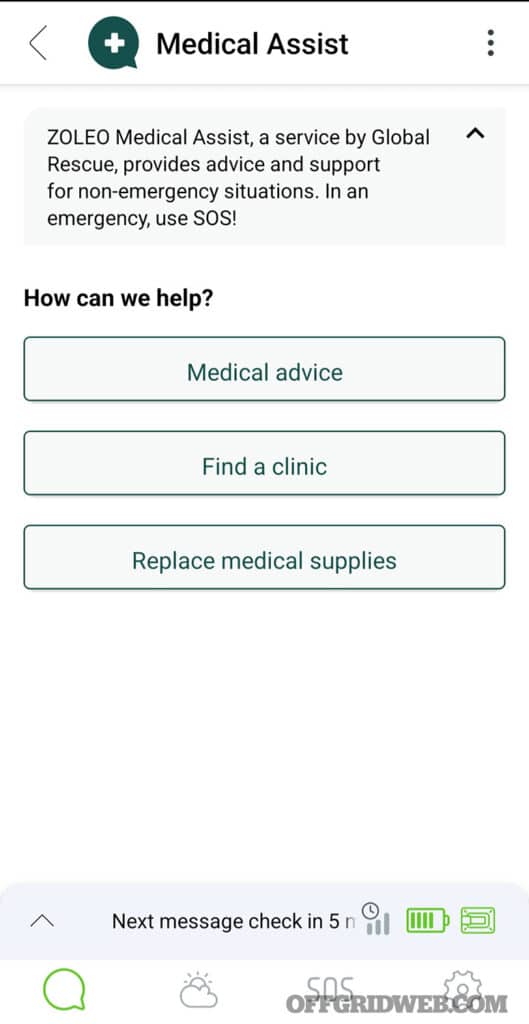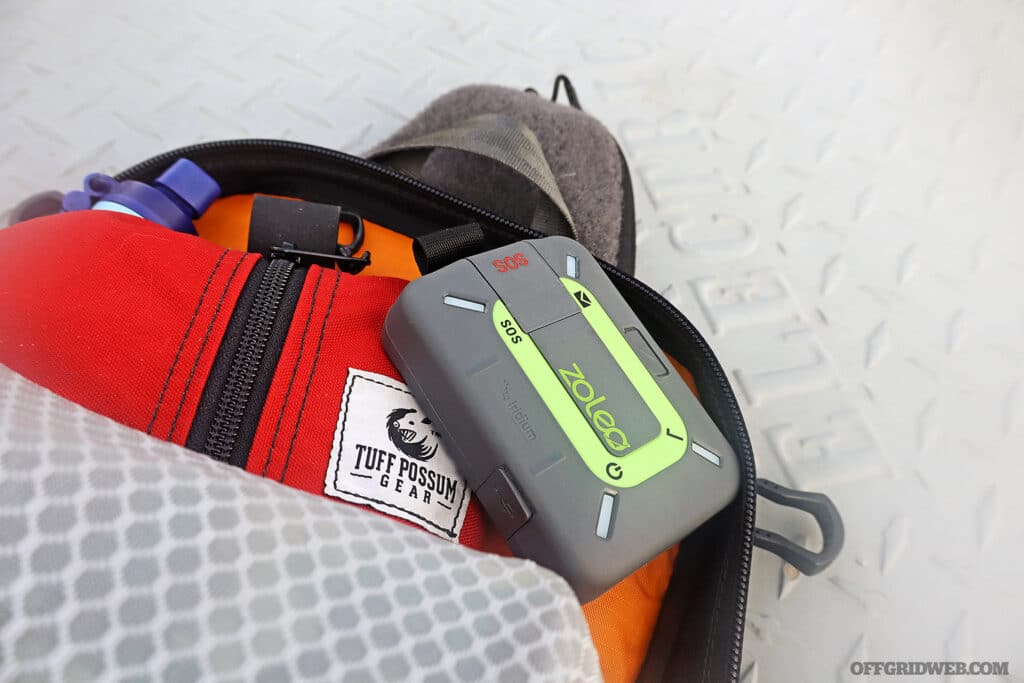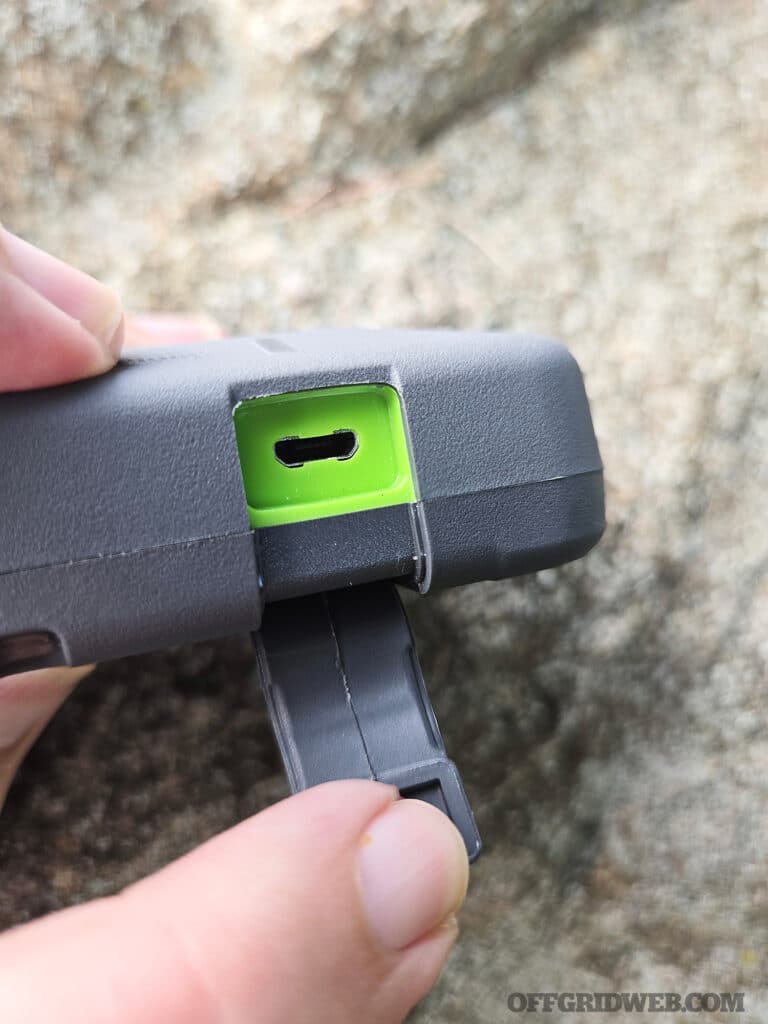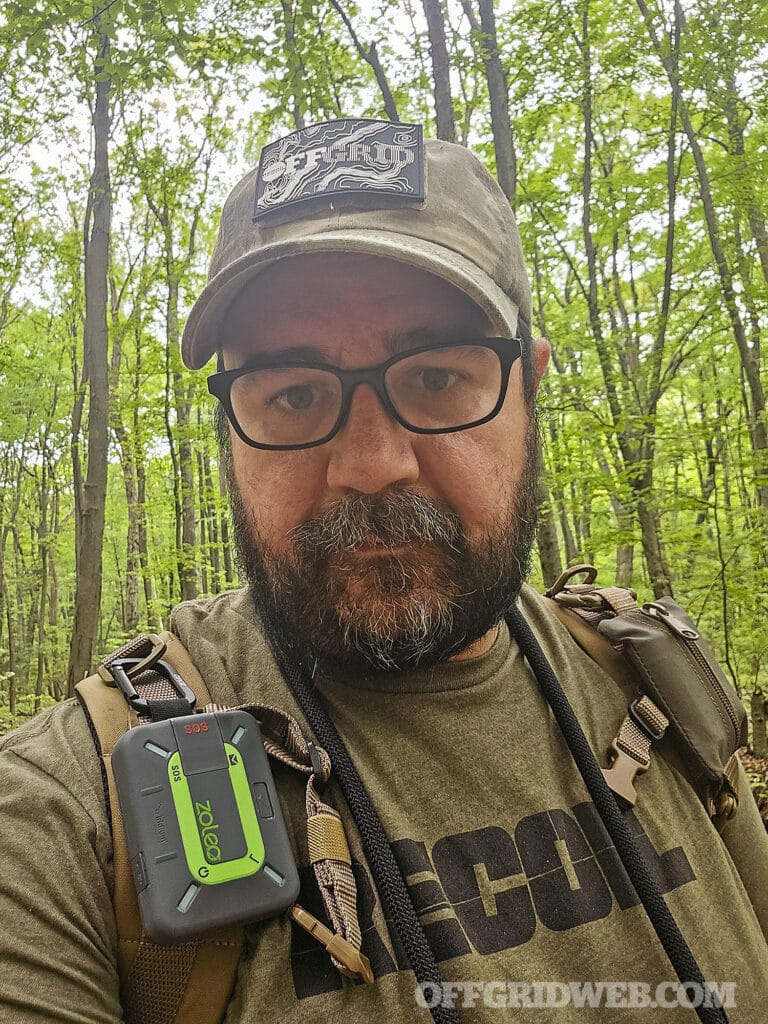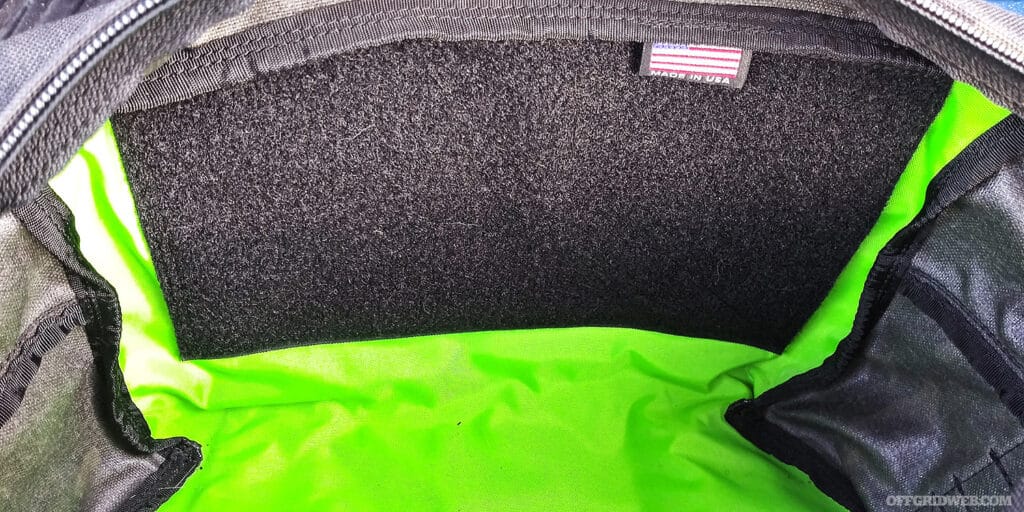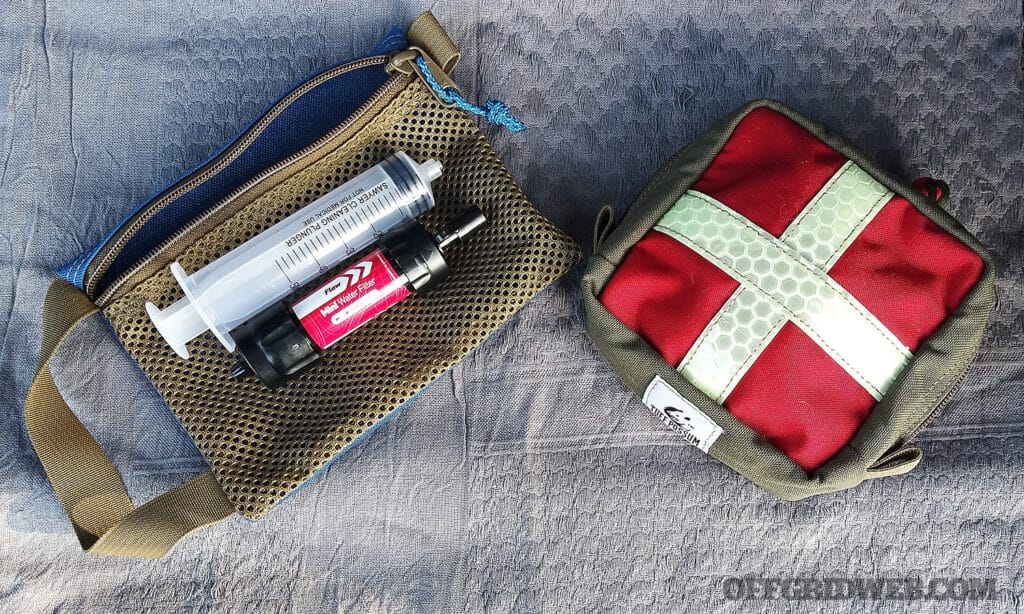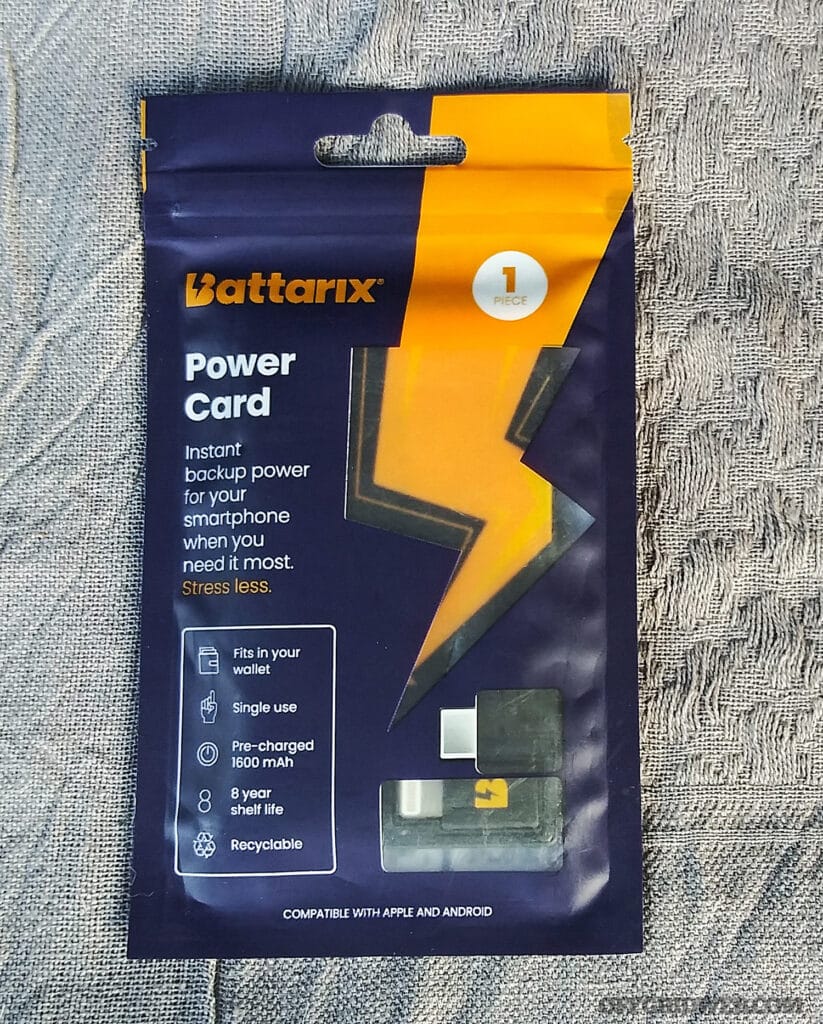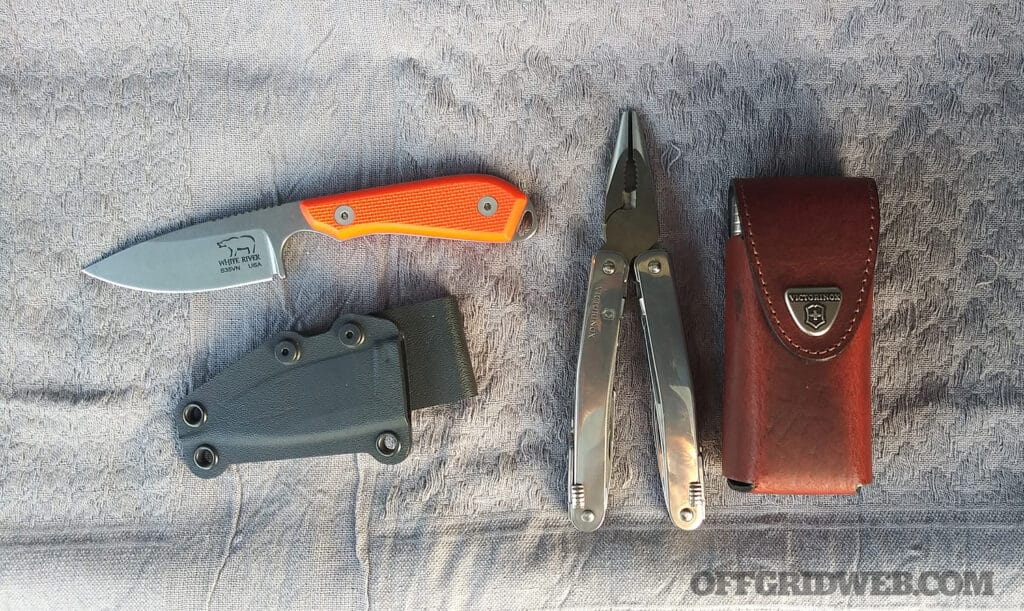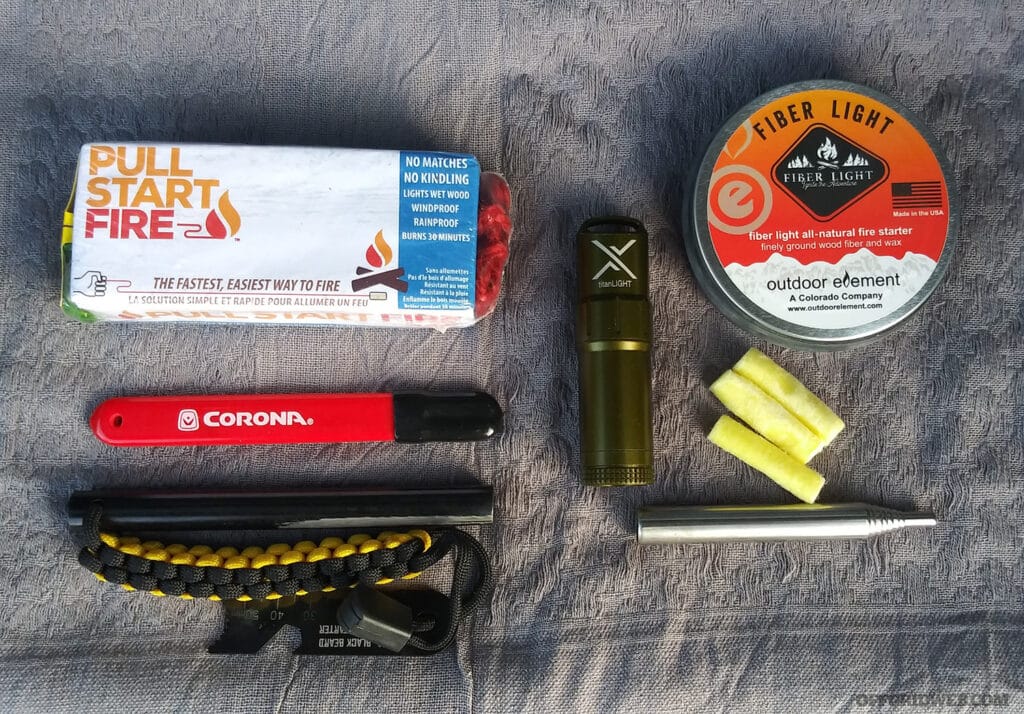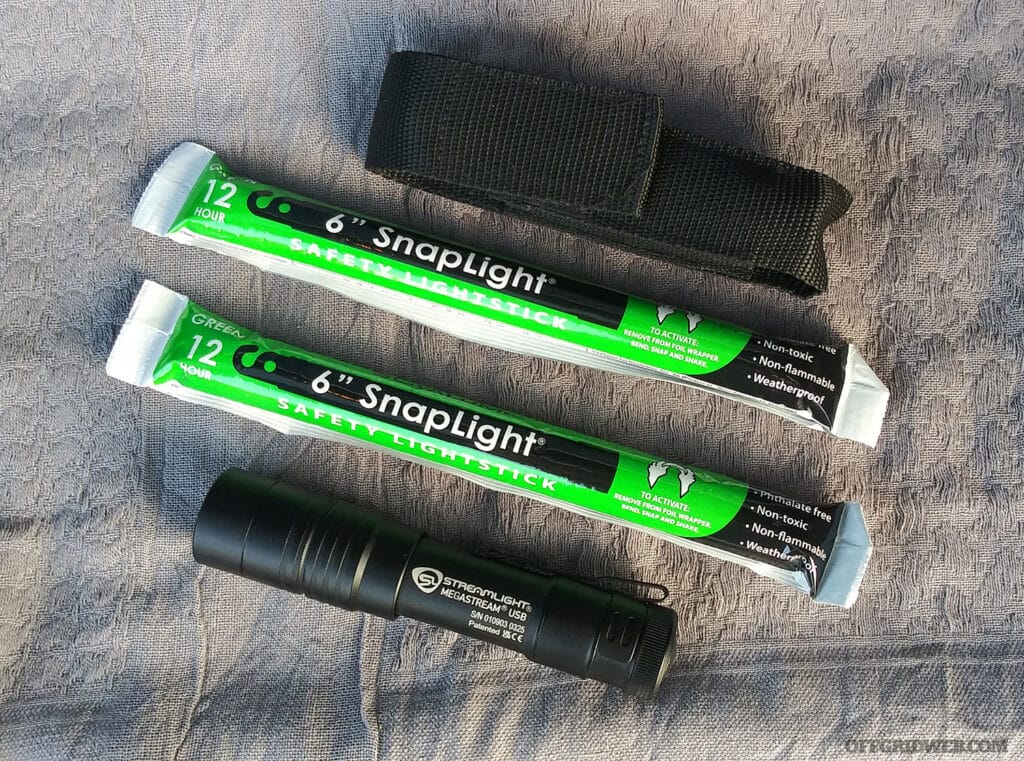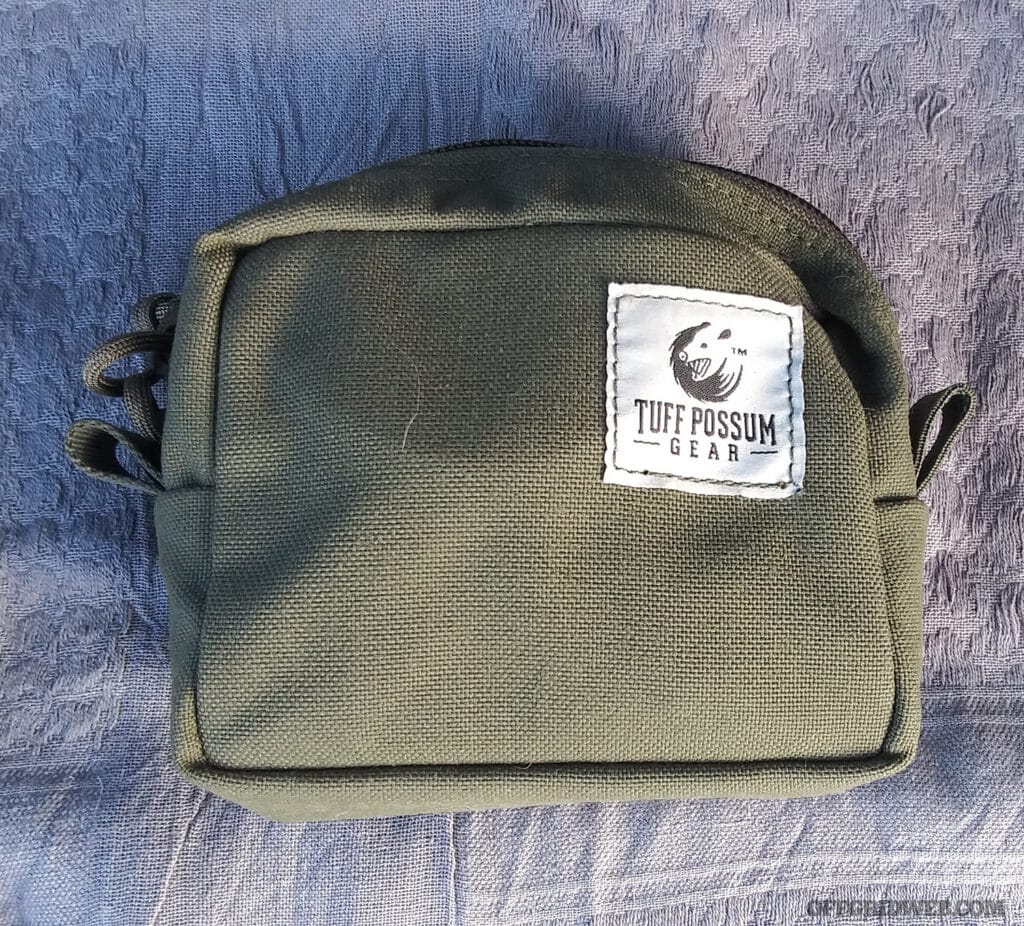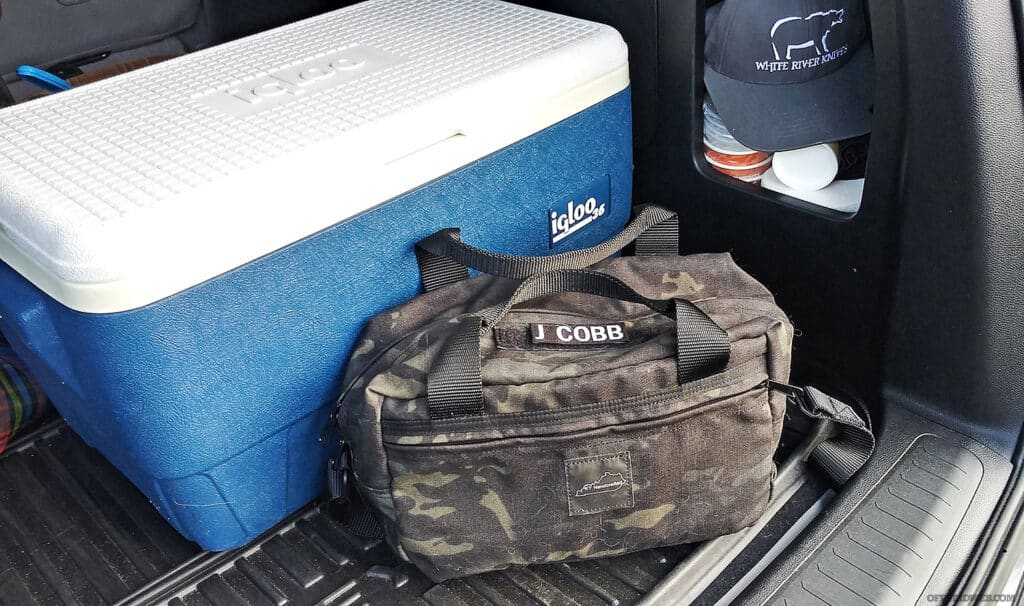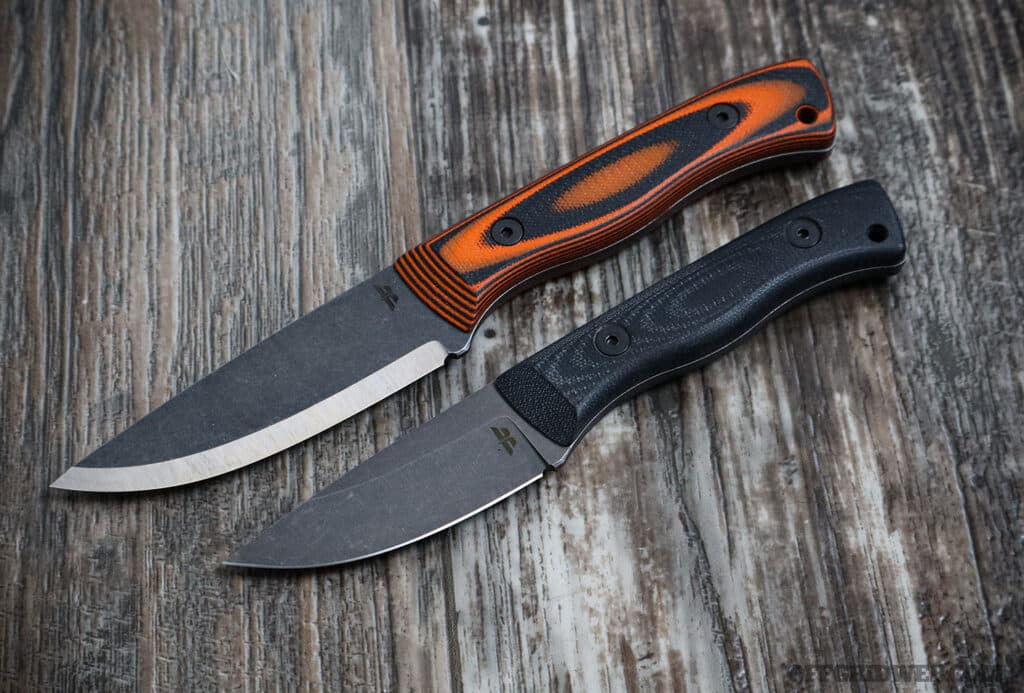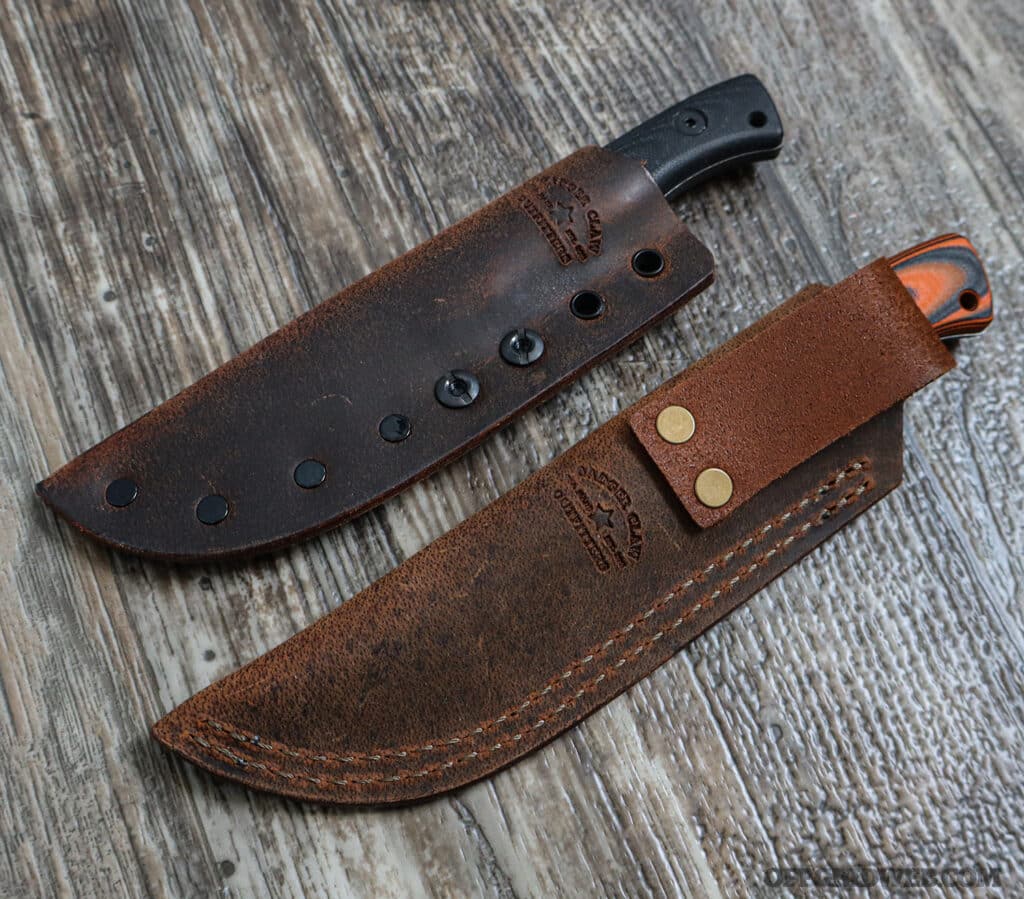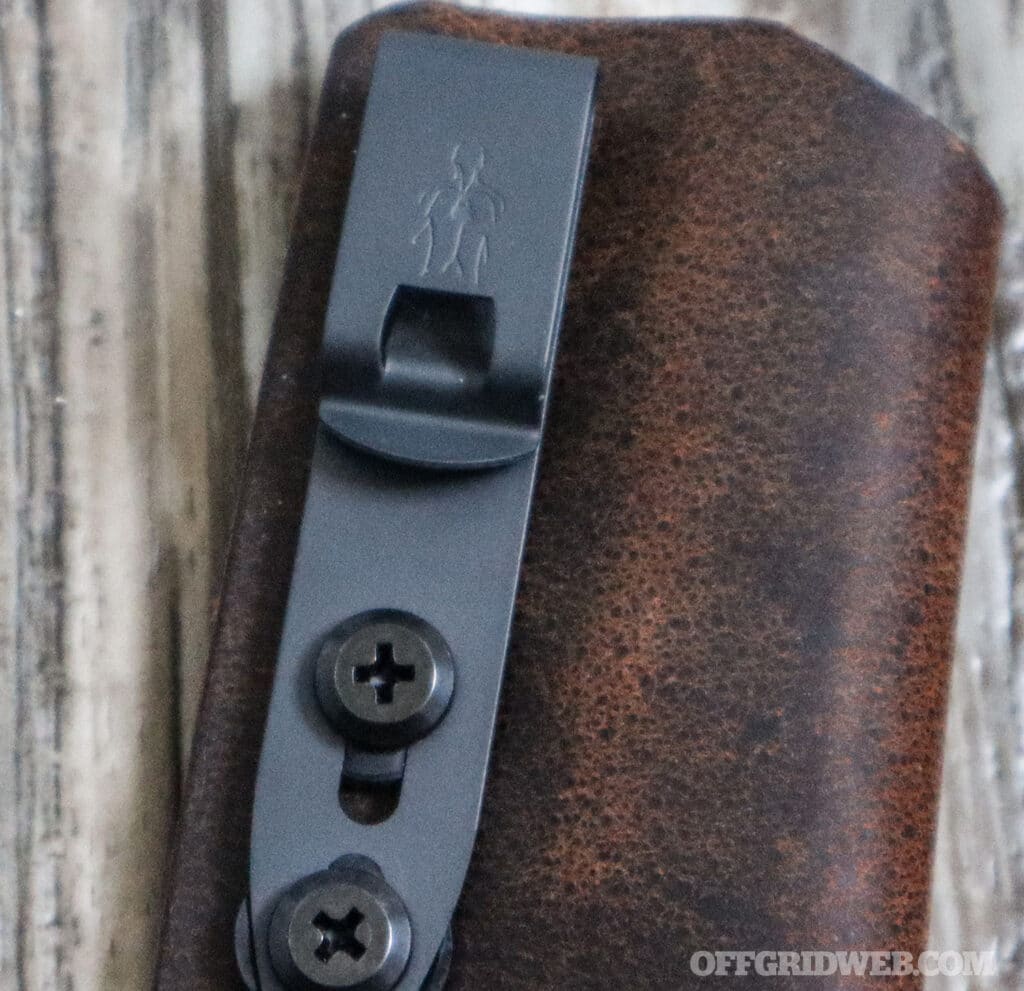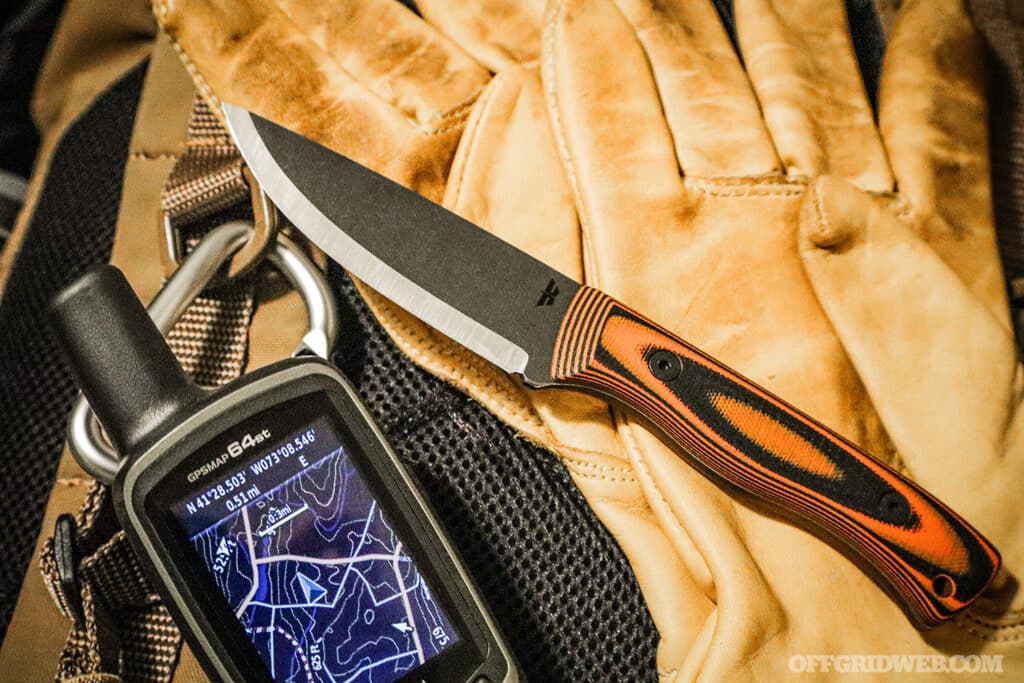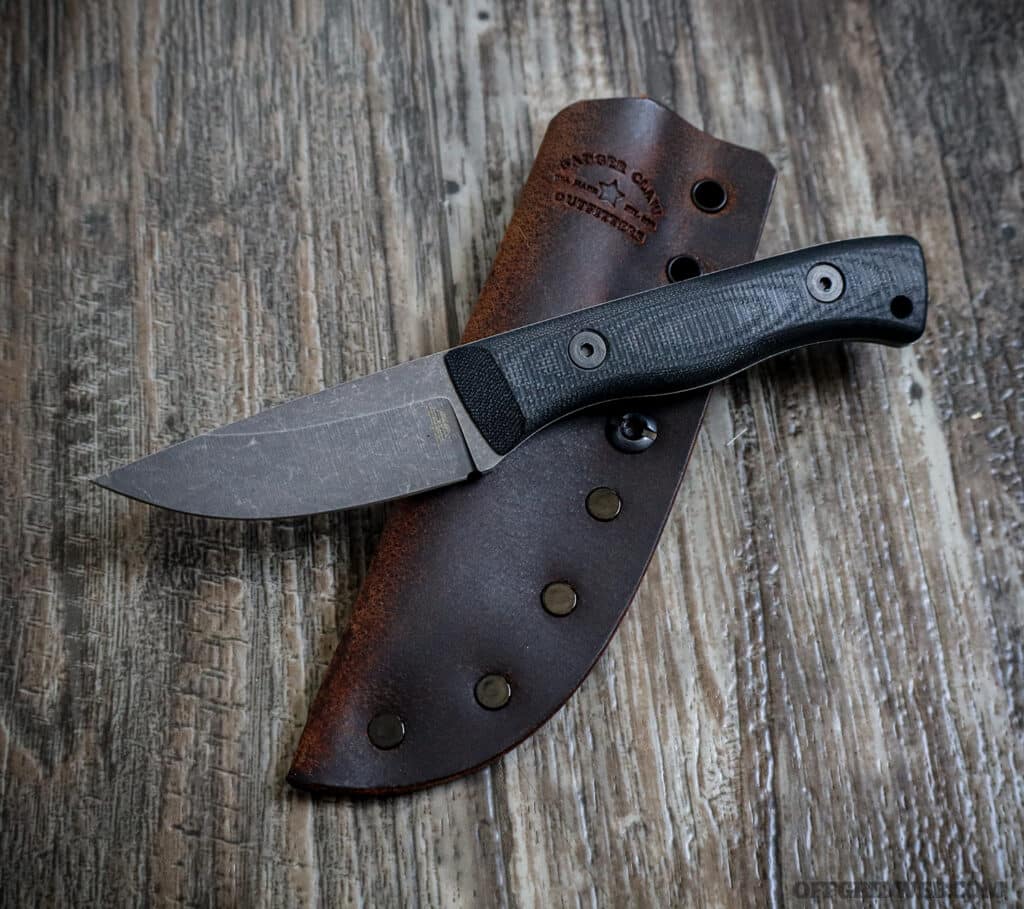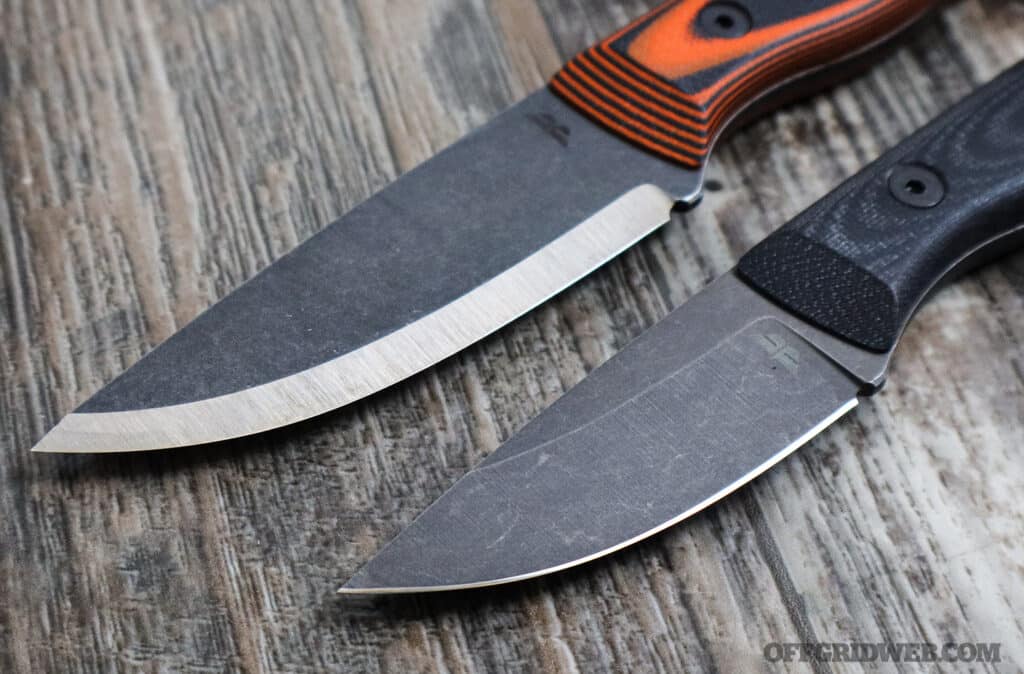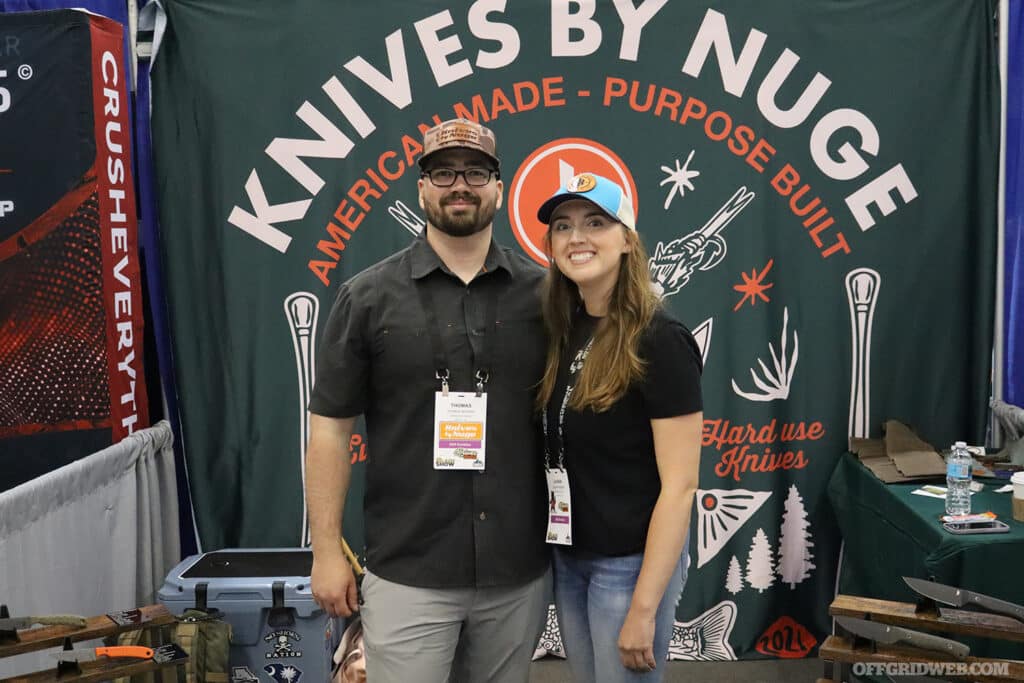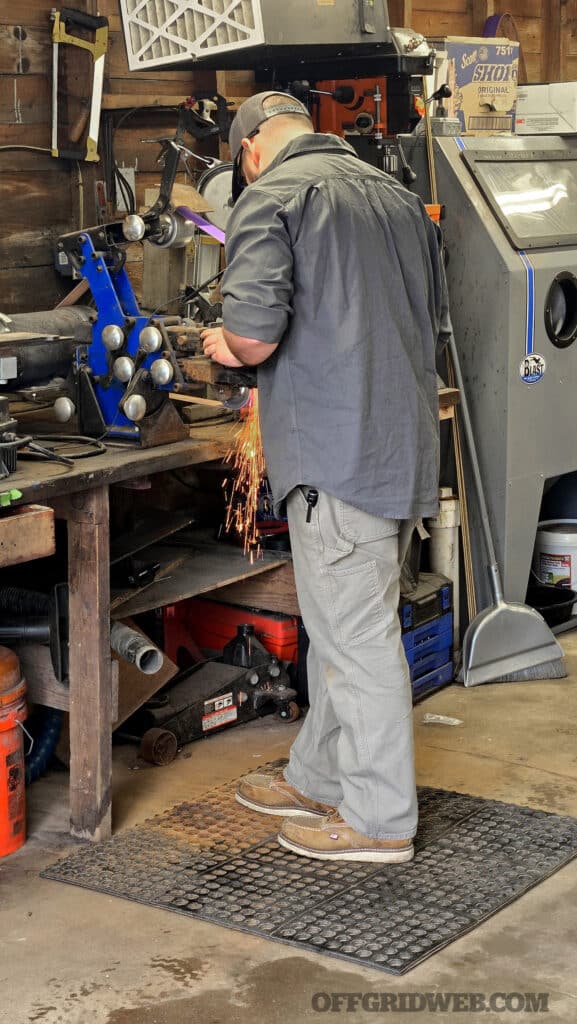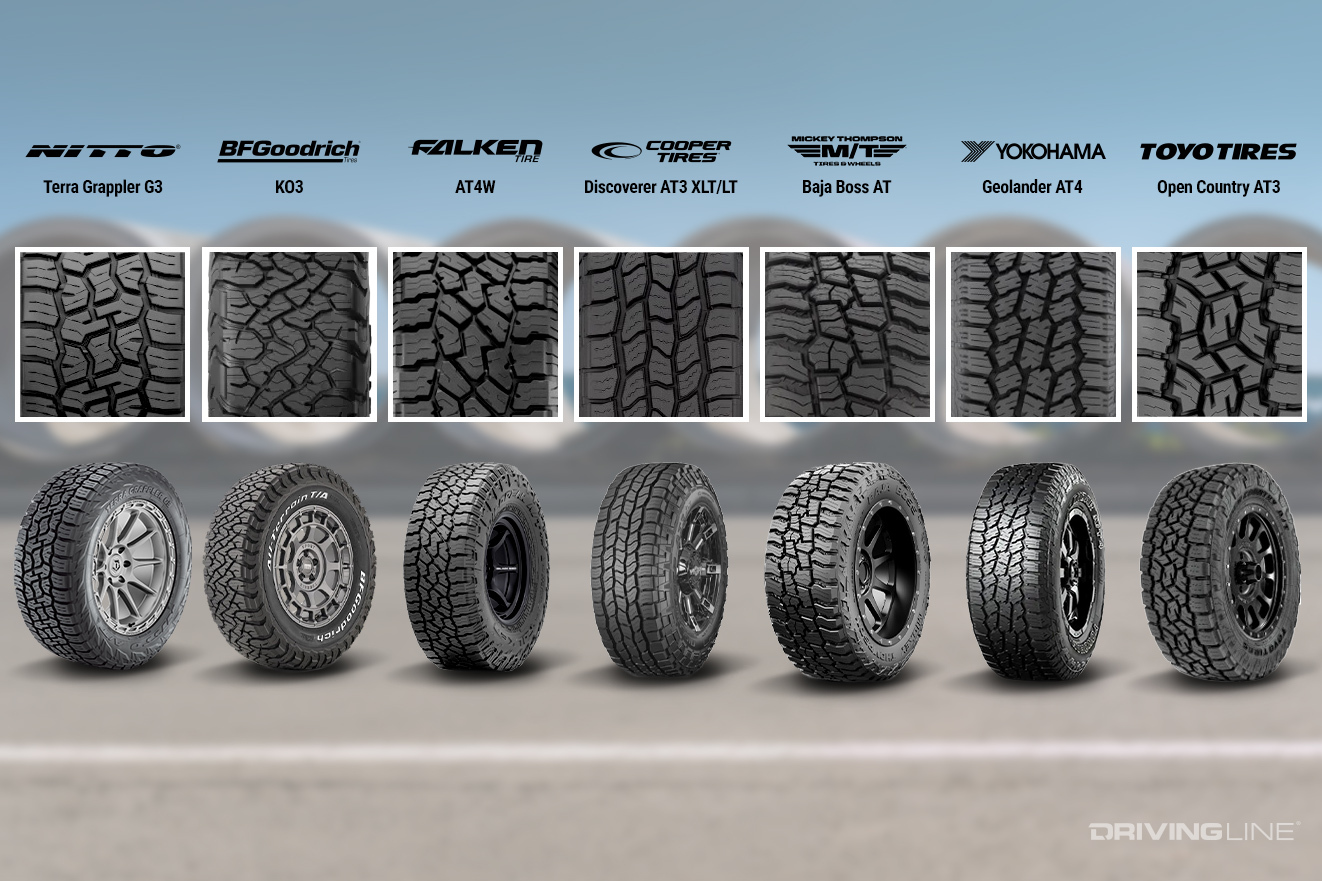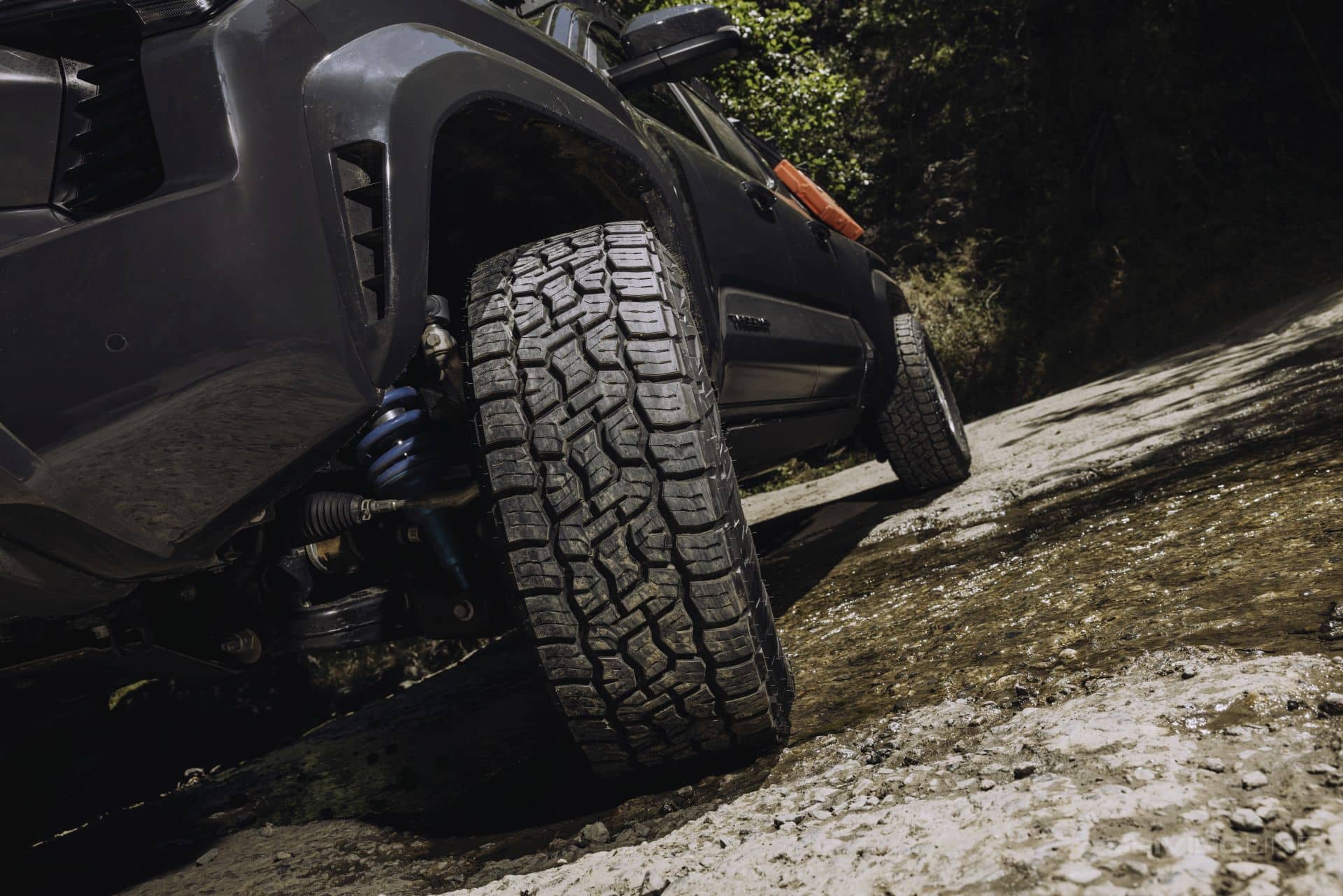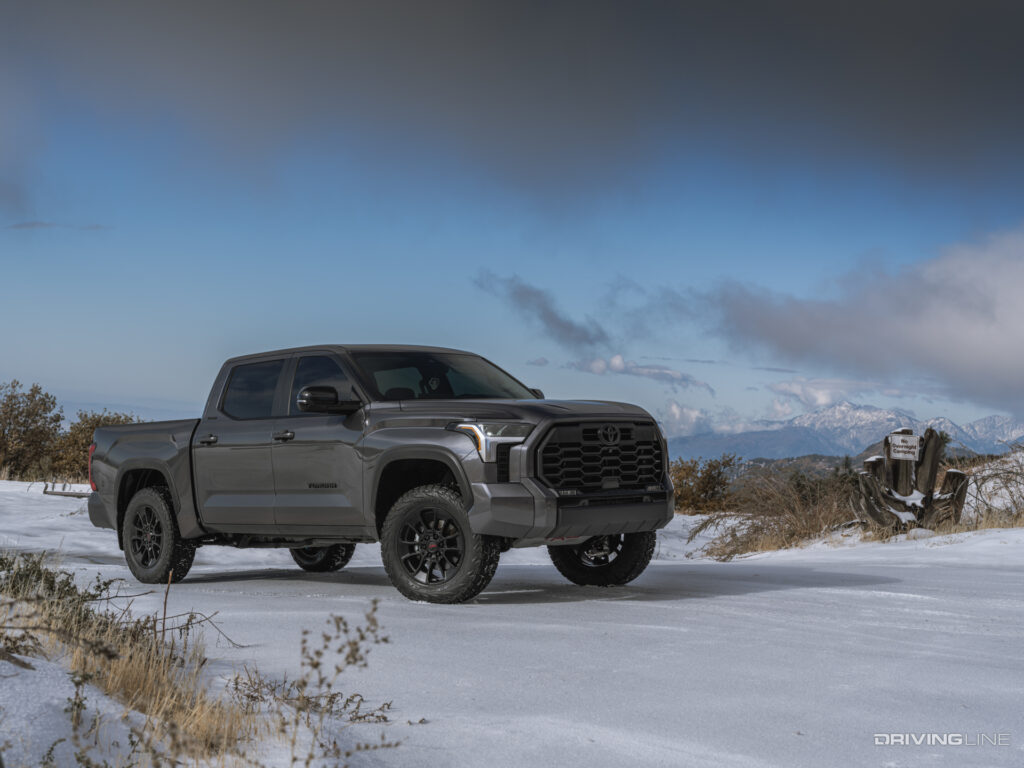In This Article
Electronics of all sorts are a fixture on the modern battlefield, just as they are in everyday life. While they can provide critical capabilities, such as communications and information gathering to combatants and civilians alike, abuse or misuse of your systems can also give away your position to those you may or may not want to have it. Conversely, should you find yourself in the position of a pursing force, whether to find and fix a hostile group, or locate someone’s emergency beacon in the wilderness, knowing how to home in on radio signals could prove crucial to the success of your mission and even save lives.
The technique of tracking down radio signals, generally known as radio direction finding (RDF) or simply direction finding (DF), can be done with surprisingly low-tech and cost-effective tools, or with highly complex and purpose-built systems that come with a much higher price tag. It’s important to note that it doesn’t matter if the transmission is encrypted or unencrypted — RDF focuses only on the presence of a signal, not its content.
In this article, I’ll briefly cover commercially available DF systems, but the main focus will be on the core skills needed to conduct manual RDF. I’ll also outline tactics, techniques, and procedures (TTPs) for mitigating RDF threats from hostile elements.
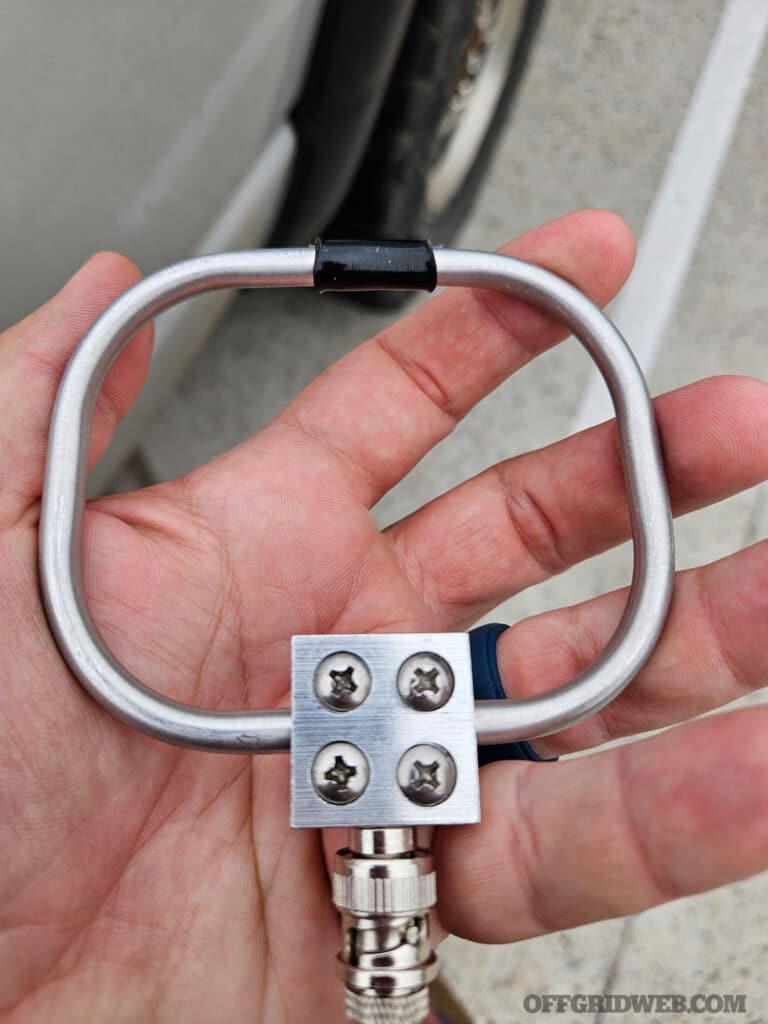
A commercially available fox hunt antenna helps you focus in on the direction of the weakest, rather than the strongest, signal strength, and is commonly used by ham radio operators to look for radio beacons in contests.
The Basics
At its core, RDF is a signals intelligence (SIGINT) tactic for identifying the physical source of a transmission once it has been detected. While this may sound complicated, it can be accomplished easily with basic equipment and skills in land navigation and communications.
The first step is recognizing that a transmission is taking place. This can be done through signal collection from a listening post or observation post, or through foreknowledge that a transmission is scheduled — such as when tracking a pirate radio station that broadcasts on a fixed timetable or known routine.
The second step is to fix the transmission’s location in space. This can be done in a few ways. One method uses multiple direction-finding stations (either fixed, mobile, or man-portable) to receive the signal and plot relative bearings. These bearings can then be used to calculate an intersection point. Another method involves using one or more mobile or man-portable DF stations to actively track the transmitting source. These stations adjust course as needed, homing in on the origin of the signal until the source is identified or visually confirmed.
When using a single, mobile DF station, success rates are much higher when tracking a continuous transmission source — such as an emergency beacon — compared to tracking an ephemeral source that is intermittent, brief, or transmits at irregular intervals.
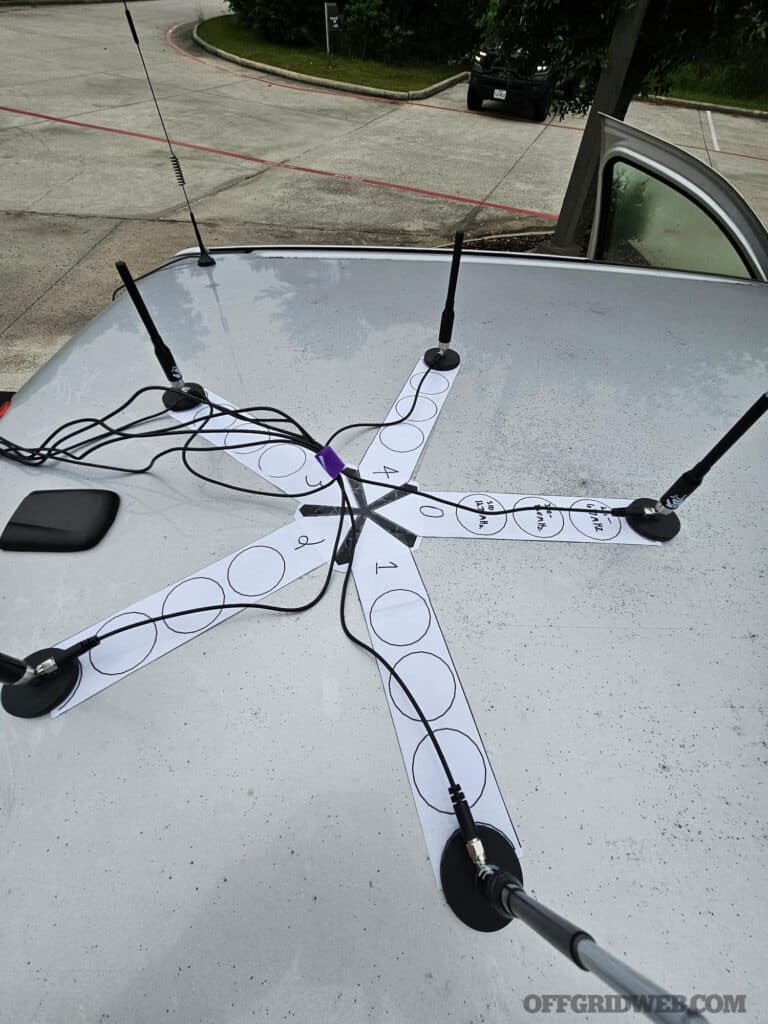
The Kraken SDR requires a set of precisely laid-out antennae to enable it to automatically pick up a signal and calculate a bearing to a signal. Here, the array is mounted to the top of a pickup truck cab.
Equipment
RDF equipment ranges from simple, cost-effective, and field-expedient tools that are highly manual but accessible on a budget, to purpose-built commercial off-the-shelf (COTS) systems and specialized gear developed for military and law enforcement use. For the prepared citizen, I’ll briefly touch on some commercial options, but the focus will be on manual and field-expedient techniques that can be learned and applied with minimal investment.
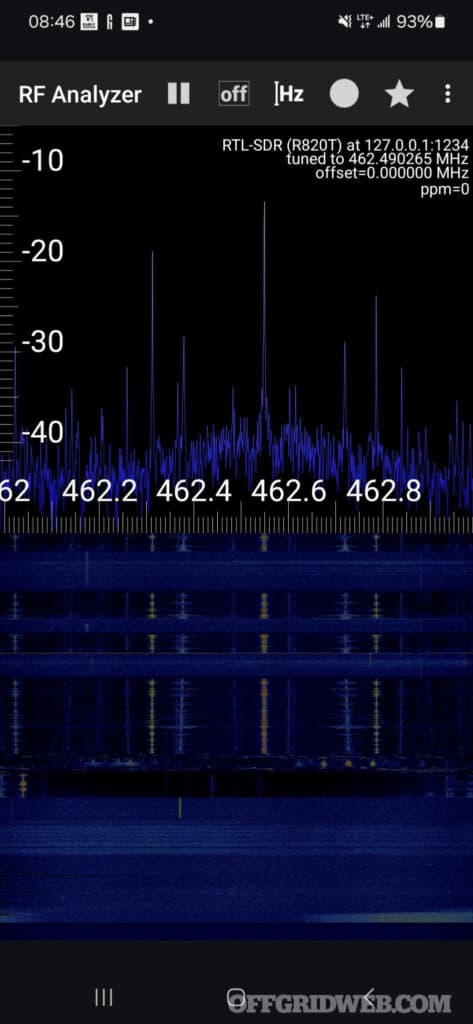
The RF Analyzer app, coupled with an RTL-SDR and a Yagi antenna can be used as a cost-effective, field-expedient platform for manual RDF. Here, we see we’re directly picking up on the target frequency at the highest relative signal strength.
COTS Solutions
If your budget allows, a purpose-built COTS direction finder might be the right choice. These systems use arrays of antennas — or sometimes a single rotating antenna — along with advanced mathematical methods such as Doppler, Watson-Watt, or correlative interferometry to determine the bearing to a signal source with a high degree of accuracy.
One such product available to the average citizen is the MFJ-5005, which is a Doppler-based system. At its heart, the MFJ-5005 is an OEM version of the KN2C DF2020T but Global TSCM Group, as their name indicates, provides a wide variety of technical surveillance countermeasure devices.
Without the antennas, the unit itself runs about $600 depending on the source. Direct from MFJ, you’re looking at $649, while Ham Radio Outlet lists it at $580 as of this writing. That may or may not sound like a lot, but keep in mind that by the time you’ve fully built out a station, you’ll be looking at around $1,000. And for best results, you’ll need at least two stations. That price point may be cost-prohibitive for many individuals or mutual assistance groups.
There are also SDR-based systems available. The KrakenSDR, when paired with open-source software like DF-aggregator, is designed to offer a cost-effective automated RDF solution. Complete with antennas, it can typically be had for around $600. However, as of this writing, the system is on backorder through all available outlets, making it a challenge to acquire despite its promising capabilities.
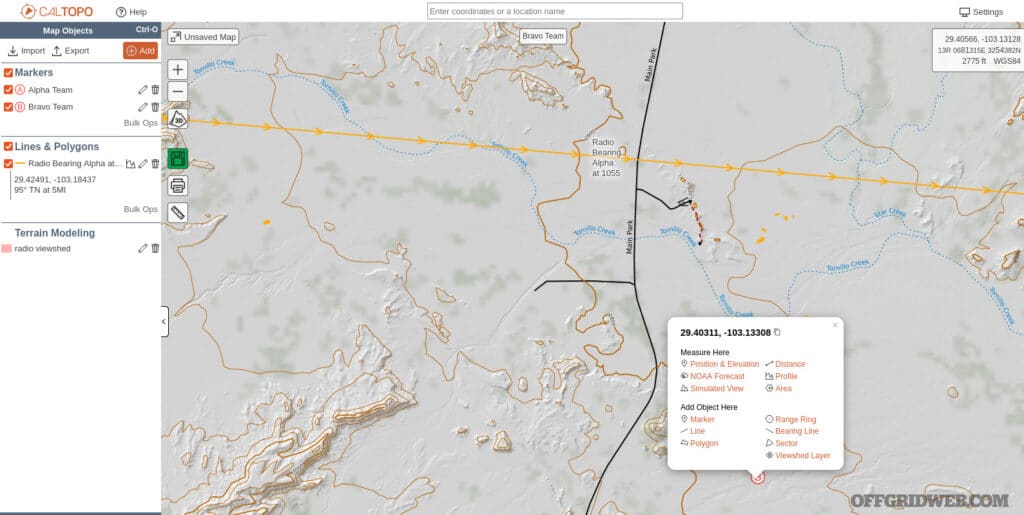
After marking the location of a team, select the point to draw a bearing line.
Manual Solutions
Due to the cost and limited availability of automated solutions, every prepared citizen should have the ability to conduct radio direction finding operations manually. To do this effectively, you’ll need a few basic tools. The following list outlines the essential equipment to get started:
• A radio receiver capable of receiving the type of signal you want to track
• A directional, high-gain antenna
• Land navigational tools and skills
• The ability to communicate between two or more teams
The radio receiver doesn’t need to be overly complicated. At a minimum, you’re looking for a handheld transceiver (HT) capable of receiving on the bands you plan to track. Ideally, the radio should include a relative signal strength indicator to help gauge direction. For those wanting a more advanced option, devices like a HackRF with a PortaPack or a TinySA make excellent choices. These tools offer visual displays of received signals, which can greatly improve your ability to identify and follow transmissions.
The best type of antenna for radio direction finding is the “Yagi” style. These can be purchased commercially at reasonable prices or built at home. The internet is full of tutorials for making Yagis using materials like PVC pipe and metal measuring tape, if you’re inclined to DIY. Another solid option is the “fox hunt loop” antenna, which can also be constructed quickly with minimal tools and materials, making it great for field-expedient setups.
Whether you choose a Yagi or a loop antenna, it’s important to know the beam width in degrees. The farther you are from the transmitting station, the wider the area your bearing will cover. Understanding your antenna’s beam width helps narrow the search area and improve accuracy.
For land navigation equipment, you’ll need at minimum a compass and a way to identify your current position — either a map, a GPS, or both, depending on your role. Maps should be as current as possible and include magnetic declination information. Your compass (my personal favorite is the Suunto MC-2) should be adjusted to reflect that offset for your Area of Operations, or as close as possible. I rely on the Garmin Instinct Solar 2 Tactical smartwatch, which includes a GPS receiver, so I always have positional awareness, even when I’m not carrying a separate GPS unit.
Next, you’ll need communications gear and the skills to use it. This means having a radio separate from the one you’re using for direction finding, or another method for staying in contact with other elements on your team. At minimum, you’ll have one other station, but in some cases, there may be three or more.
More sophisticated groups using tools like ATAK and mesh networking may combine mapping, location, and communication capabilities into one system. Other options for building a common operating picture include software like CalTopo. However, it’s important to remember that in some scenarios, these tools may be unavailable. Always keep paper maps as a reliable backup in case digital systems fail.
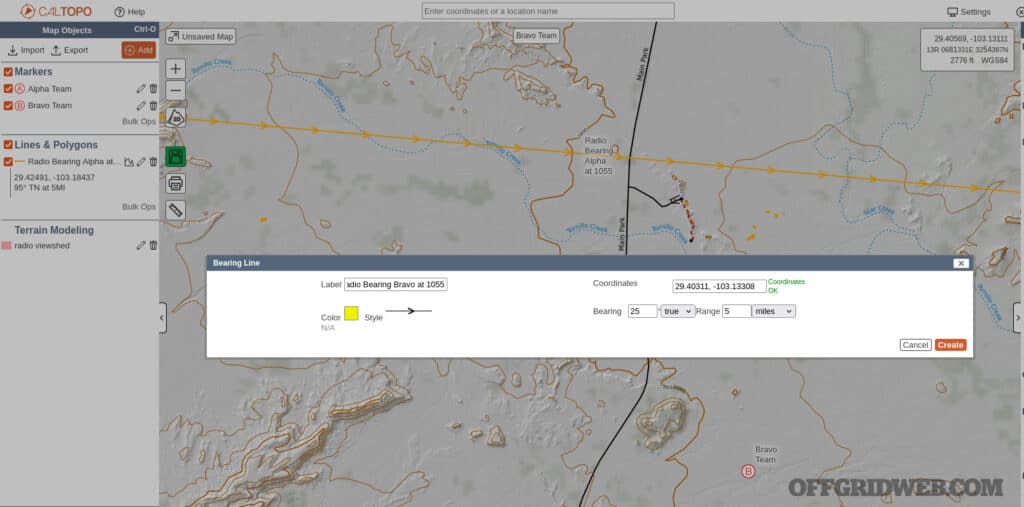
Put in the details of the bearing and label it for future reference, especially if you’re on an active, maneuvering hunt.
Manual Direction Finding
Once you have the equipment, you need to know the skills. So, how does manual RDF work and what are the steps? To illustrate it, I’ll use the following scenario:
You’re part of a group with three separate elements operating together: two patrol units and one command unit. The command unit is in a fixed or semi-fixed position, possibly vehicle-mobile. From their location, they’re running a signals collection system using SDR receivers and a laptop. A digital common operating picture is not available, so CalTopo Desktop is being used locally at the command post. Each patrol unit has been issued paper maps generated from CalTopo to ensure navigation and coordination can continue without digital support in the field.
Command’s SIGINT station intercepts a transmission from an opposition force communicating with their own command element. You and your sister patrol element are alerted and instructed to take bearings from your respective positions to locate the transmitting station, which is broadcasting on a frequency of 147.250 MHz.
While one member of your team confirms your location using a GPS, you attach your Yagi antenna to an HT and tune to 147.250 MHz. With the antenna extended, you slowly rotate until you receive the strongest signal, focusing on maximum signal strength. You then identify a terrain feature in line with the antenna and use your compass to shoot a bearing. Your unit’s RTO reports both your position and the bearing to Command. Meanwhile, the other patrol element follows the same procedure from their location to help triangulate the signal source.
Command, now in possession of both patrols’ positions and their relative bearings to the signal source, can plot the intersection points. Is this the exact location of the transmitter? Maybe not. Remember beam width — a 20-degree beam may seem narrow at close range, but it widens significantly over distance. The result is a zone of probability, not a pinpoint. Gathering more readings from different positions improves accuracy and narrows the search area.
Once you have a reasonable idea of where the opposition is, command can direct the nearest team into the area to fix and finish the opposition.
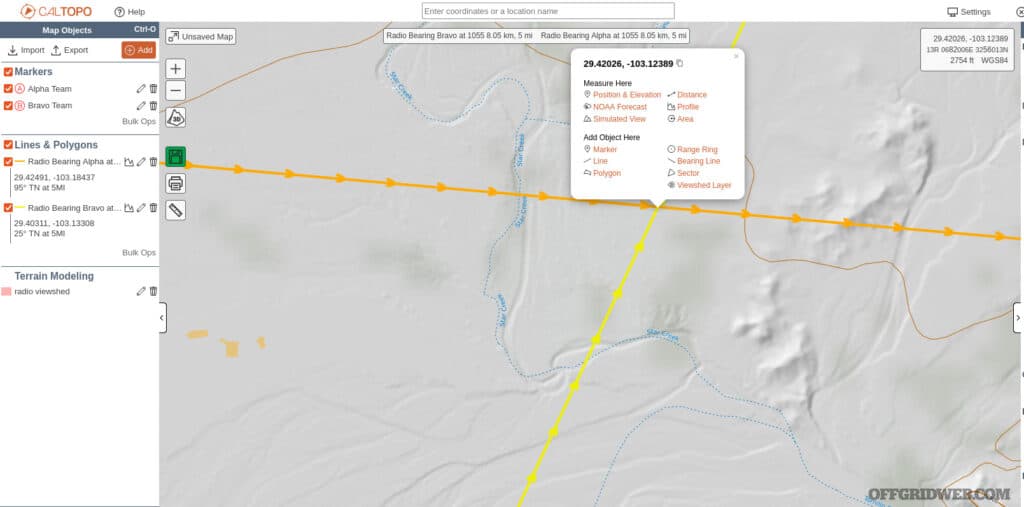
Find the intersection of the bearing lines to start to get a general idea of where the source of the radio signal is.
Points of Failure
Before we get into TTPs for mitigating RDF being used against you, it’s important to cover a few environmental factors that can interfere with your ability to accurately direction find a transmitting station. First, there are basic radio propagation concerns. Not all DF stations may be able to receive the transmission at all, which makes fixing a position much more difficult. Propagation can be influenced by several variables, including temperature, terrain, and the amount of vegetation in the area — especially when working with VHF and UHF signals, which are more easily blocked or absorbed.
Second, and more common in urban or suburban environments, is signal reflection causing multi-path transmission. In these cases, DF stations may not be receiving the direct signal from the actual source but instead picking up a reflected signal. This can create a false bearing, as the radio waves bounce off buildings or other structures.
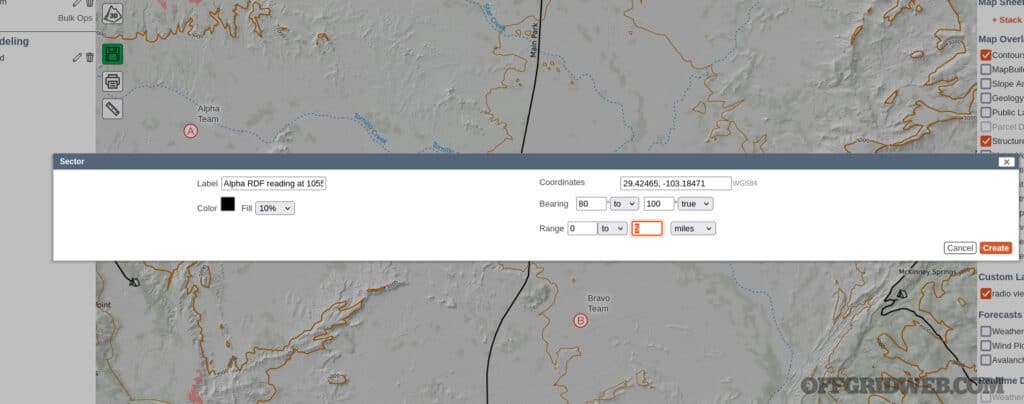
Knowing the beam width of the antenna, we can use sectors to give a better understanding of where the source of the radio signal could be.
Practicing RDF
Increasing your chances of success in any endeavor comes down to training for it. One effective method is participating in, or hosting, a fox hunt. Radio fox hunting, also known as radio orienteering, is a recreational event popular among amateur radio operators. The setup is similar to a land navigation course, but instead of navigating by terrain alone, participants must locate a series of waypoints by homing in on low-power radio beacons. It’s a fun and practical way to sharpen your manual RDF skills under realistic conditions.
Many of these events are open to the public and can be found listed on websites such as homingin.com. They’re a great way to practice the skills needed for manual radio direction finding. If you’re part of a mutual assistance or civil defense group, it’s also a good idea to run scenario-based exercises together. Integrating RDF TTPs into your group’s regular training helps ensure that everyone knows how to work as a team and effectively use all available resources when it matters most.

Using bearings to shoot a center line down the arc of the sector can help us narrow down the likely location inside the more general search area.
COMSEC: Defense Against the Dark Arts
In the preparedness community today, it’s become trendy to claim that using unencrypted civilian radios like a Baofeng will get you “killed in the streets” or targeted by an airstrike if SHTF. The usual solution offered? An expensive, digital, encrypted radio. But want to know a secret? If you abuse or misuse those tools, they’ll get you killed in the streets too, just with a higher price tag. At least you’ll have looked good on Instagram before things went sideways. Gear matters, but discipline, training, and smart use matter a whole lot more.
RDF is simply a form of traffic analysis, which means that even encrypted communications are not inherently secure. Encryption protects content, not presence. However, by applying proper radio field craft, you can significantly improve your communications security (COMSEC) and reduce the risk of detection or interception.
Avoid Detection
An ounce of prevention is worth a pound of cure. If your transmission isn’t detected in the first place, no one knows to come looking for you. You can reduce the chance of detection in several ways.
Start by limiting your transmission power. Use only as much output as needed to complete the communication. For example, full-power VHF transmissions with full-size antennas are a poor choice for tactical comms between squad members. Instead, use low-power settings and stubby antennas to reduce signal range. This is especially effective in dense vegetation, where propagation is already naturally limited.
Selecting frequency bands based on their propagation weaknesses can also work in your favor. For example, VHF tends to refract more in urban environments, making it harder to pinpoint, while UHF is more easily absorbed in rural terrain and dense vegetation, limiting its range.
When communicating over longer distances, such as back to a fixed base, use directional antennas. This requires solid land navigation skills, similar to RDF, but the narrower beam reduces the chance of interception. It also allows you to use less power to complete the transmission effectively.
If you have a general idea of where potential adversaries might be located, you can use key terrain features to your advantage. Vegetation, hills, and other natural barriers can help block or weaken line-of-sight transmissions, making it harder for others to receive your signal or determine your position. Tools like the Viewshed Analysis feature in CalTopo are excellent for planning this ahead of time and identifying terrain that can help shield your communications from unwanted direction-finding efforts.
Be Nimble
While avoiding detection is ideal, it’s not always practical. You may find yourself operating “behind the lines” during a civil disorder scenario, or up against an opponent with multiple fixed or mobile automated RDF systems. In these situations, time becomes your most critical asset. Staying on the move is key.
Keep transmissions short and direct. Don’t linger on the air. Using pre-established code sheets for complex but commonly repeated messages can save valuable time. This applies even if you’re using encrypted radios, because the goal here isn’t just secrecy — it’s minimizing how long your signal is exposed to detection.
If you can communicate asymmetrically, even better. Digital modes like JS8Call allow you to transmit a text message that can be received and read later, giving you the advantage of minimizing transmission time. While often associated with HF radio, JS8Call can also be used on VHF and UHF bands with the right setup.
Once you’ve made your transmission, don’t stick around. Move away from your transmission point as quickly and quietly as possible to avoid detection and reduce the risk of being triangulated.
Be Pseudorandom
Even if you do everything else right, using a fixed check-in schedule increases the risk of being found. A consistent pattern gives your opposition a window to listen in, track, and eventually fix your position.
Instead, use a check-in schedule that appears random to outsiders but follows a predictable pattern known only to your team. This adds a layer of unpredictability that helps keep you off the radar. Alternating both frequencies and times further reduces the likelihood of someone identifying you or locking onto your transmissions. Randomness, when done with intent, becomes a powerful form of security.
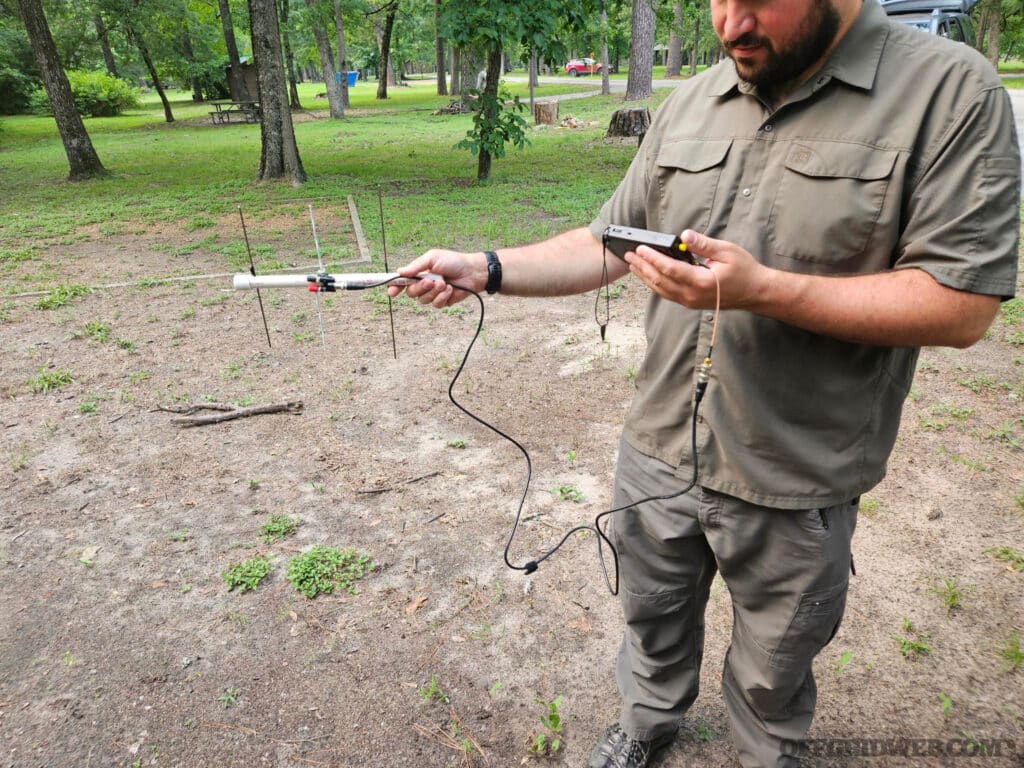
A homemade Yagi antenna can be created quickly and inexpensively. Paired with a TinySA, it becomes a good manual RDF platform without having to rely on a traditional receiver.
What About Technical Countermeasures?
When it comes to technical countermeasures, the most effective is frequency hopping. This technique uses two or more radios synced to the same clock and set to follow a shared schedule, automatically cycling through frequencies during transmission. To the operators, communication appears uninterrupted. But to anyone trying to listen in, they’ll only catch a fraction of a second on each frequency before the signal jumps. By randomly cycling through channels, the chance of a successful intercept or direction finding attempt is significantly reduced. It’s a highly effective method for staying one step ahead.
While technologies like Frequency Hopping Spread Spectrum (FHSS) are common in military radios, they’re far less prevalent in the commercial and amateur radio world, though a few products exist. Unfortunately, no FCC-approved amateur radios currently support FHSS or Direct Sequence Spread Spectrum. Some commercial radios, like the Motorola DTR700, do offer these features, but they come with their own limitations and compatibility challenges.
The next major technical countermeasure is the use of Near-Vertical Incident Skywave (NVIS) setups with HF. While it is technically possible for national-level intelligence agencies like the NSA or DIA to conduct RDF against NVIS transmissions, doing so requires a level of sophistication and infrastructure far beyond the reach of most non-state actors. This makes NVIS a solid choice for secure regional communication, though it does require more planning, gear, and setup than VHF or UHF systems.
Conclusion
With simple tools and consistent practice, anyone can learn to conduct radio direction finding operations. While those with greater resources may opt for purpose-built, automated RDF systems, even individuals with modest means can get the job done using basic gear like directional antennas, paper maps, and a reliable compass. Skill matters more than the price tag.
Becoming proficient with your tools, along with the techniques, tactics, and procedures, takes time and consistent effort. Events like radio orienteering or fox hunting can help you build those skills more quickly in a controlled setting. Incorporating cat-and-mouse scenarios into your group training will strengthen your MAG’s ability to locate and fix transmitting stations. Just as important, it will help you develop the skills needed to protect your own communications against those trying to do the same to you.
Read More From Issue 69
Don’t miss essential survival insights—sign up for Recoil Offgrid’s free newsletter today!
- Issue 69
- Editor’s Letter Issue 69
- Knives By Nuge
- All-Purpose Road Trip Pack
- Review of The Guerilla’s Guide to Signals Intelligence
- ZOLEO Review
- Signal to Noise: Crisis Communication
- Gear Up: Desk to Dawn
- Calling 911
Check out our other publications on the web: Recoil | Gun Digest | Blade | RecoilTV | RECOILtv (YouTube)
Editor’s Note: This article has been modified from its original version for the web.

